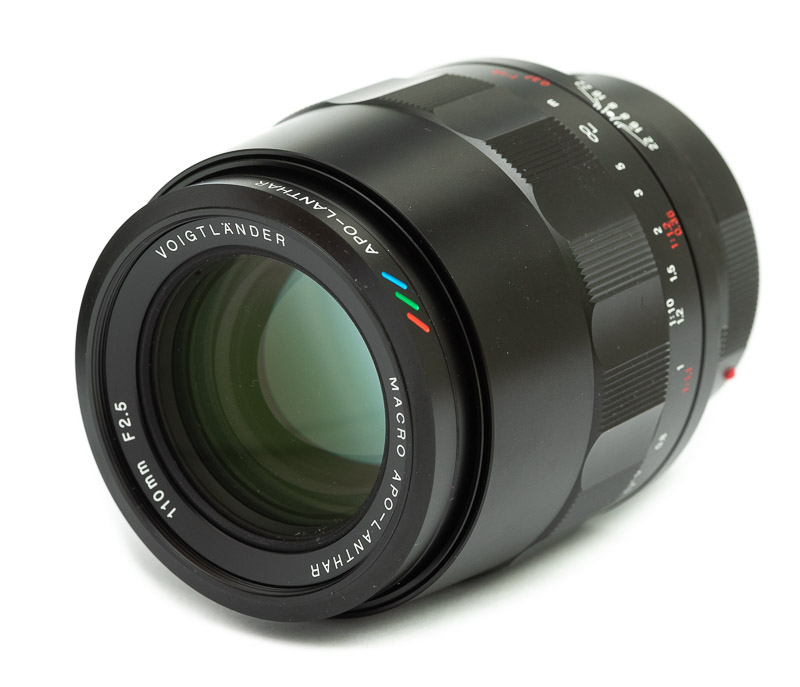
The Voigtlander 110mm F2.5 is among the very best E-mount lenses you can buy. It has been part of Phillips standard kit for 18 months and David has used his a lot as well. In this review we evaluate it in-depth and also share our experience.
Image Samples
You can find many of the images shown in this review in full resolution in this album.
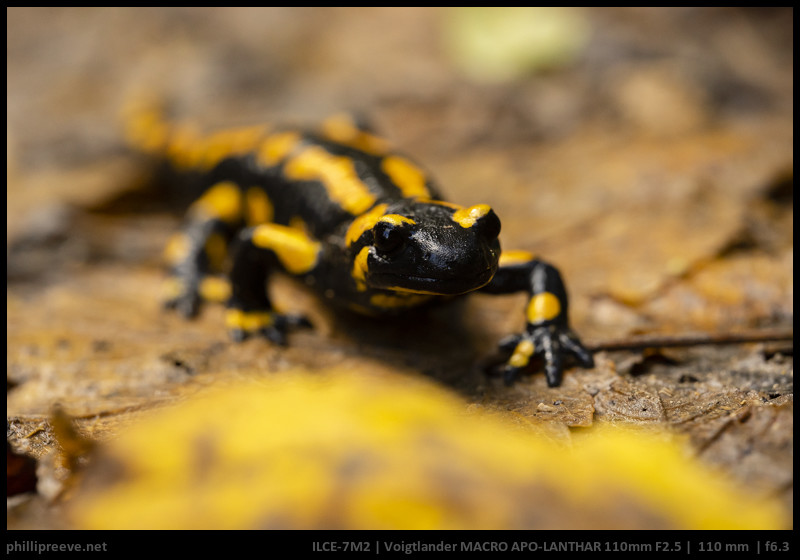

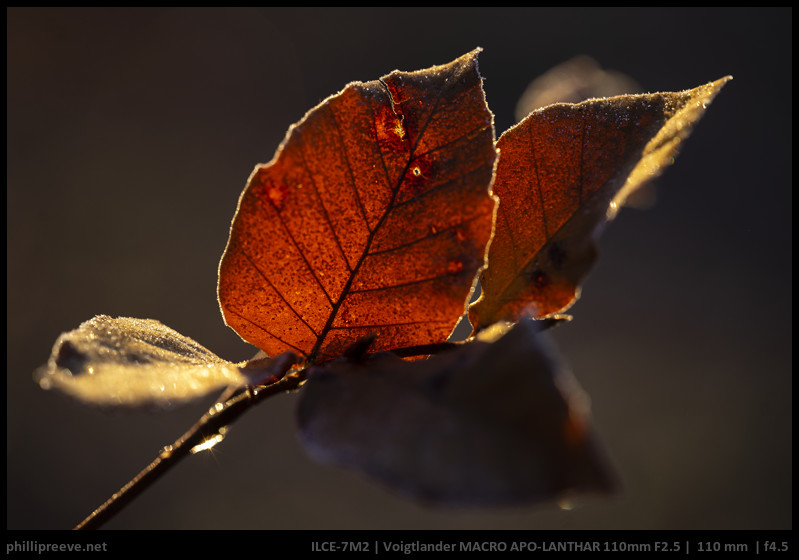
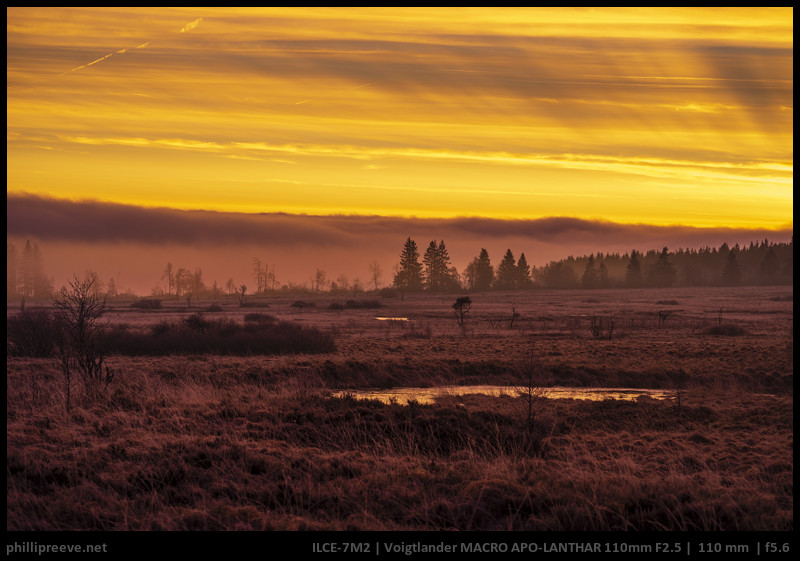
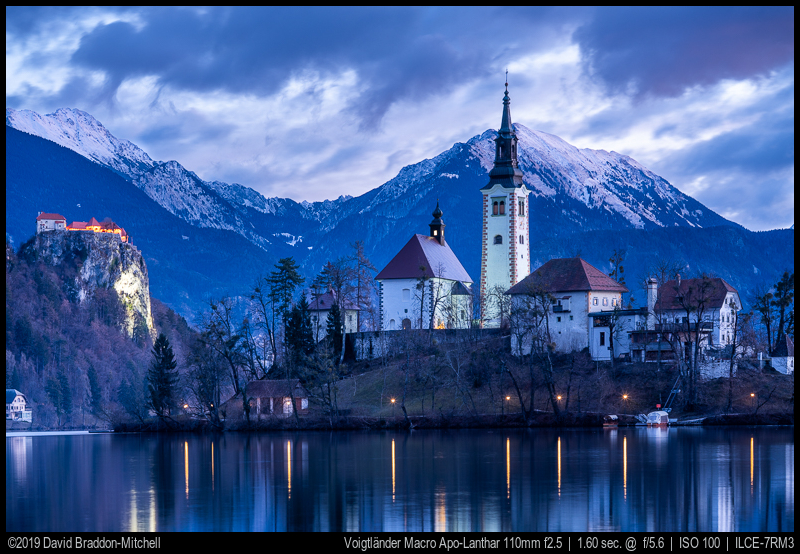
Specifications
| Diameter | 78 mm |
| Length | 100 mm |
| Filter Thread | 58 mm |
| Weight | 771 g |
| Max. Magnification | 1:1 |
| Working distance | 17 cm |
| Number of aperture blades | 10 |
| Elements/ Groups | 14/12 |
$1099 at CameraQuest, Amazon.com, B&H, ebay.com (affiliate links). If you purchase the lens through one of these affiliate-links we get a small compensation with no additional cost to you. If you are in Australia you can purchase it from the Australian distributor, Mainline Photographic for AUD 1595.
Disclosure
Phillip bought this lens from his own money. David got a review copy from the Australian distributor, which he then purchased.
Contents
Features
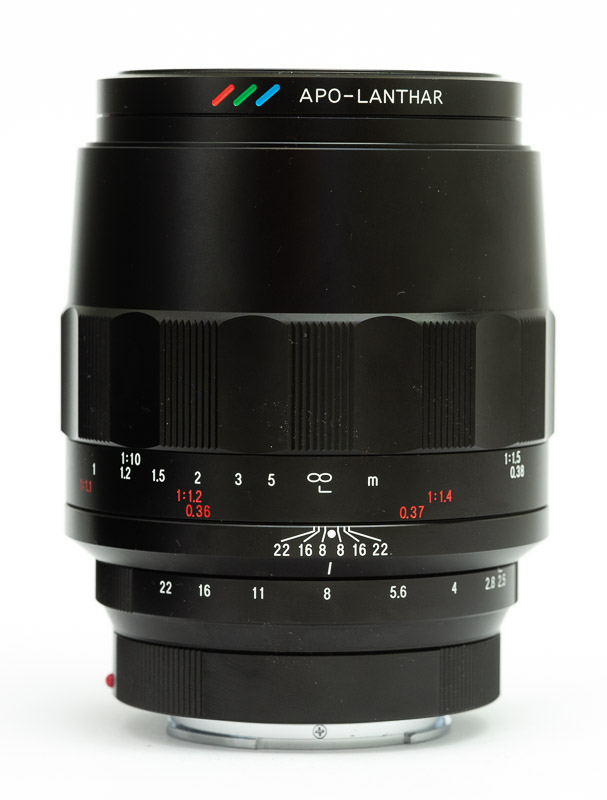
The Voigtlander 110mm F2.5 Macro APO-Lanthar is a fully manual lens so you have to change focus and aperture by yourself. The camera can’t change the aperture so S- and P-mode will not work as with native lenses.
It has electronic contacts to communicate with the camera though, so you will have correct exif-data, and the OSS in all Sony cameras with IBIS will automatically know the correct focal length and distance to use the 5-axis stabilizer. Focus magnification can be automatically activated when the focus ring gets turned.
The Voigtländer focuses down to life size magnification (1:1) like the Sony G 2.8/90 Macro or 2.8/50 Macro. It’s little brother the 2/65 APO only focuses to half life size (1:2).
Voigtlander also calls it an APO lens which means that chromatic aberrations are very well corrected. More on this further below.
Build quality and handling
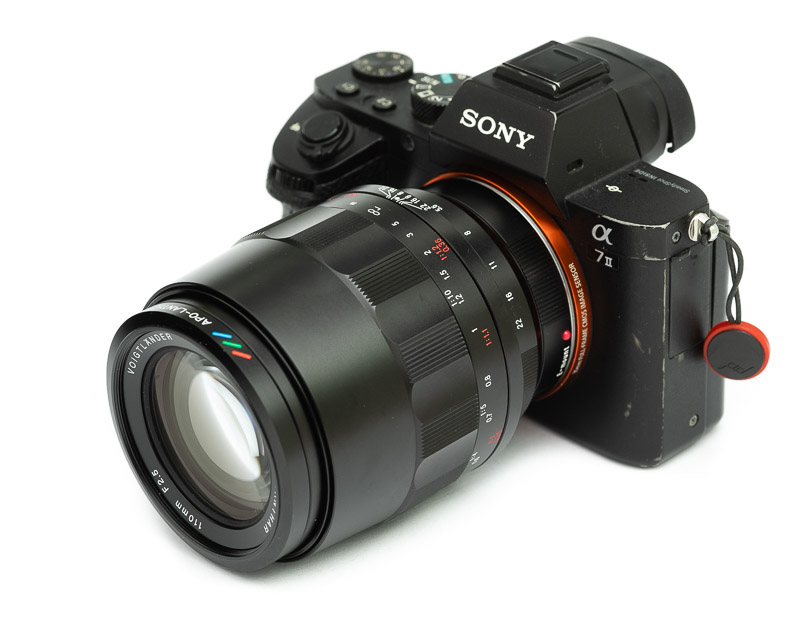
The Voigtlander 110mm F2.5 Macro offers very good build quality. The lens hull is made from nothing but metal and tolerances are very low. Most but not all markings are engraved.
There is no gasket around the mount and Voigtlander does not claim any weather resistance.
After 18 Months of regular usage Phillip’s copy shows a small scratches at edges.
Of course I can’t tell you how durable the lens will be in the long term. All I can do is give you my superficial impression which is very positive in this case. Dealing with Voigtlander repairs can be a hassle since these are done in Japan and usually take many weeks.
Changing lenses
If you have used Zeiss Loxia lenses you will probably have been frustrated by the fact that there is no good place to grab them when you change lenses. This is not an issue with the Voigtlander since you can easily grab it by its base which is even textured for better grip.
Focus Ring
The focus ring travels around 250 degrees from 35cm (1:1) to 42cm (1:2), and a further 160 or so degrees to 1m and then about 70 degrees to infinity. That is a very reasonable transmission for a macro but it is steep at longer distances and therefore a bit slower to focus precisely. The ring itself is easy to grip and the resistance is about perfect. The Voigtlander focuses quite a bit beyond infinity which is also indicated by the focus scale.
Aperture ring
The aperture ring sits close to the mount and is less easy to reach than with some other Voigtlander lenses where it is a at the front. It is still pleasant enough to use. It is made from metal with distinctive stops and a very pleasant resistance. I am not a fan of 1/3 stops since it makes it harder to count the stops but that’s what we get. The Voigtlander stops down to f/22.
Hood
The Voigtlander 110mm F2.5 Macro’s hood is about 4 cm long and adds about 40% to the volume of the lens.
Since the front lens is rather exposed it makes sense to use a hood for protection. If your camera bag can fit the original one go for it but a cheap aftermarket lens hood (affiliate link) which is only half as deep can be a good alternative.
The lens hood makes a difference for flare resistance when the sun is just outside the frame.
Size and Weight
The 110mm F2.5 does not focus internally and therefore extends a lot when it is focused at short distances.
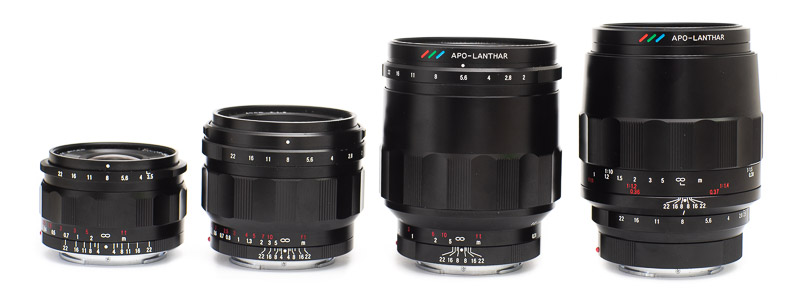
The CV 2.5/110 is a substantial lens. Handling is still pleasant but many smaller lenses feel better matched with my a7 series In light of the great performance this is not a big issue but something to consider when you decide whether to purchase the lens.
Optical performance
These results are based on the use with a Sony Alpha 7II or a7rII.
Flare Resistance
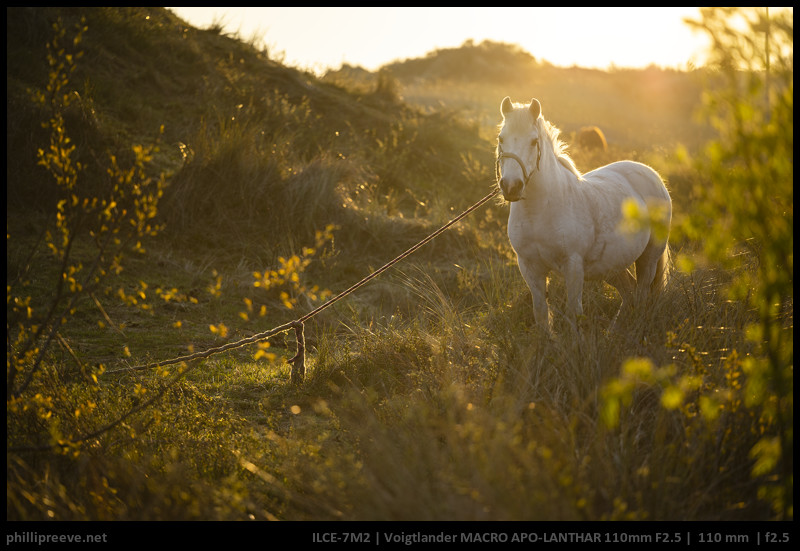
If you have the sun in the frame you will notice a significant amount of veiling flare which reduces contrast:
The lens hood can make a dramatic difference when there is direct light on the front of the lens:
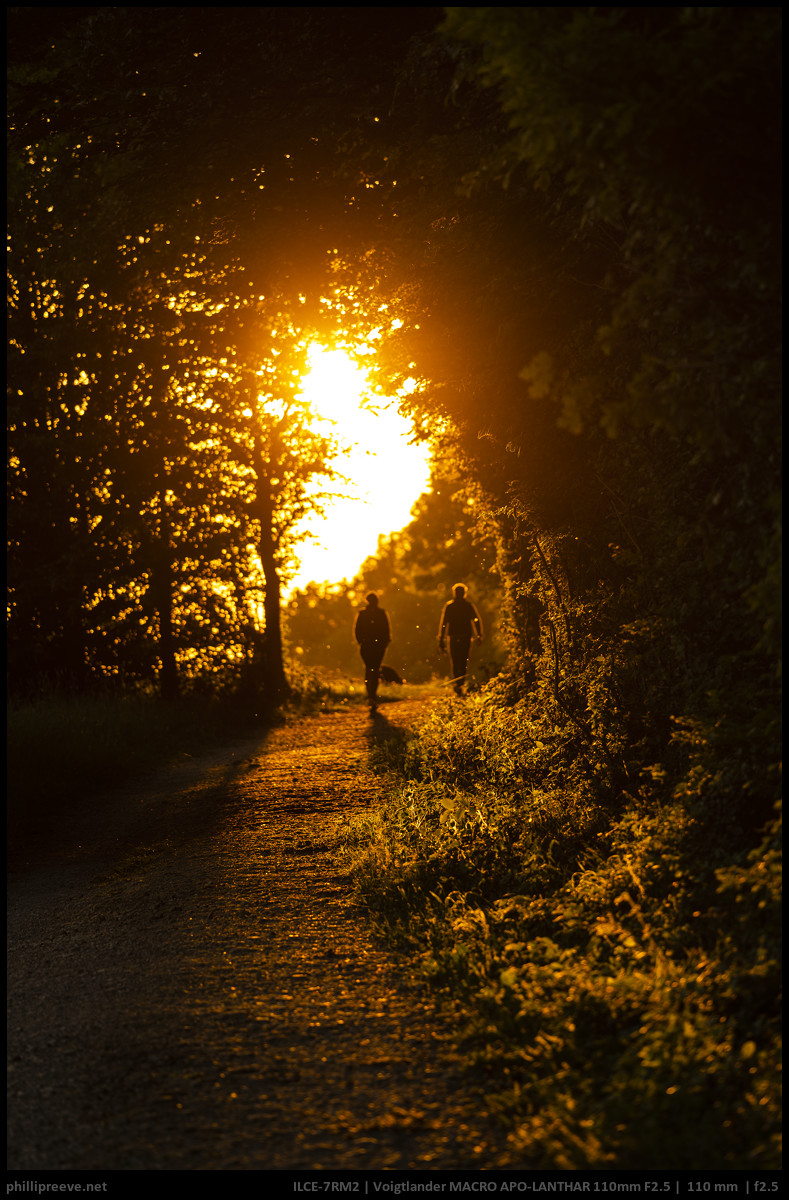
So flare can be an issue but that is true for any longer lens I know of. The Voigtlander’s performance is actually above average for a lens of this focal length.
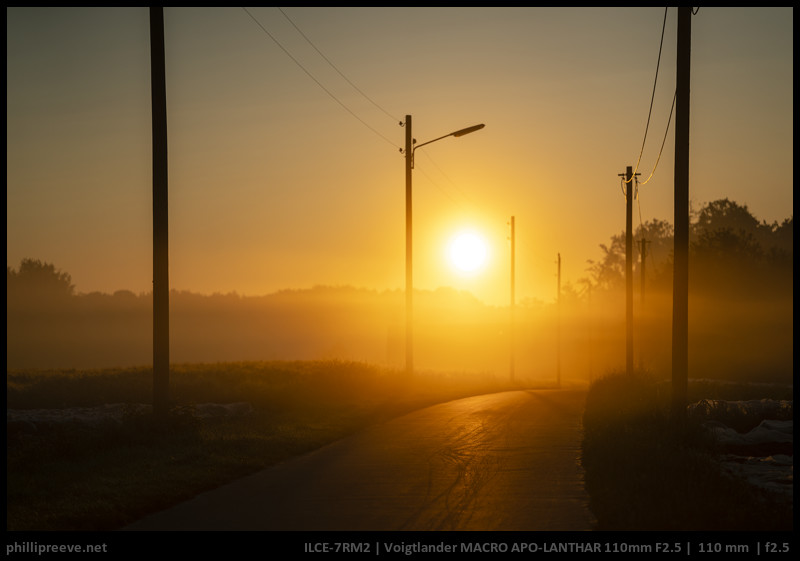
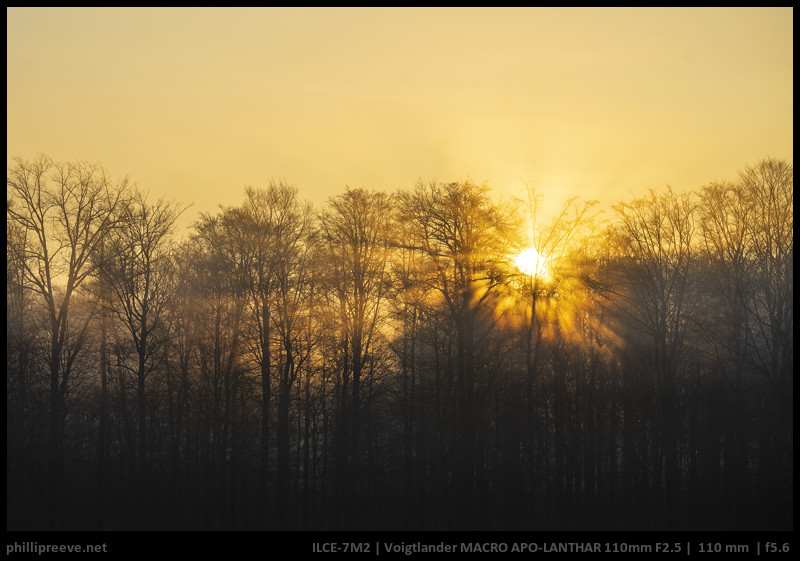
Sunstars 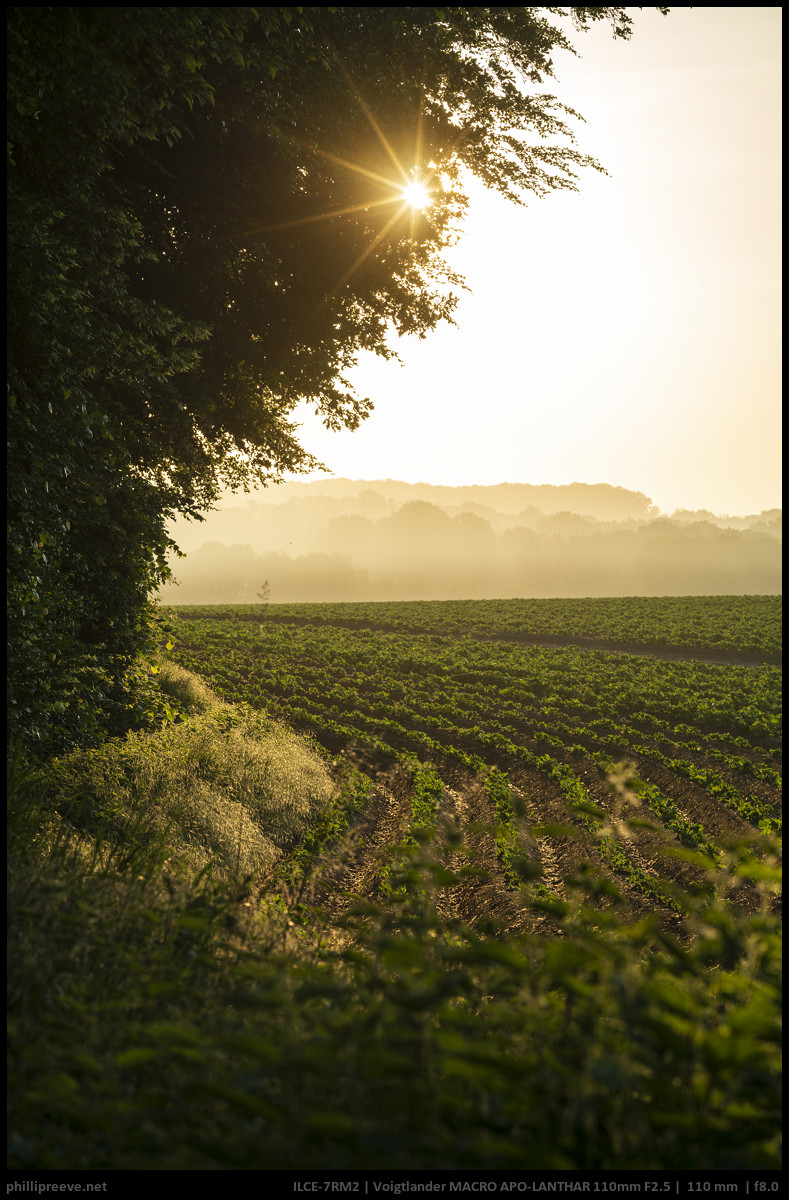
Well defined 10-pointed sunstars from f/2.8.
Bokeh
Scene 1: Short distance
Scene 2: Short distance
Scene 3: Longer distance
Observations
- f/2.5 and f/2.8 look virtually identical at very close distances
- Out of focus highlights are rendered very smooth
- Cat-eyes are rather pronounced
- As usual bokeh gets a bit harsher at longer distances
- Stopped down the shape of highlights can be a little distracting
- No onion rings
So most of the time the Voigtlander 2.5/110 APO Macro has very good bokeh but there are a some situations where it can become a little distracting.
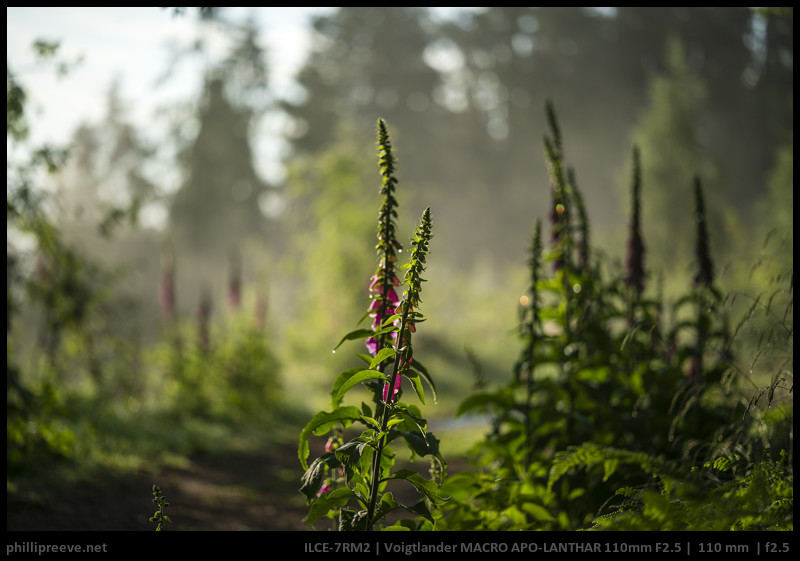
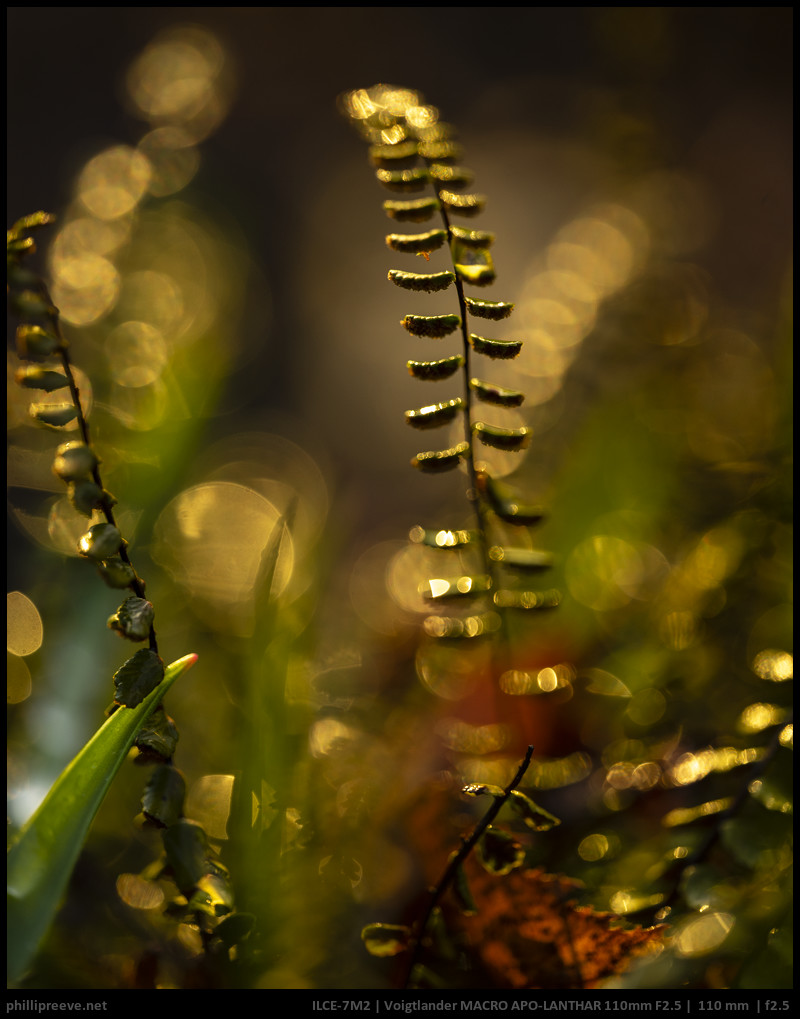
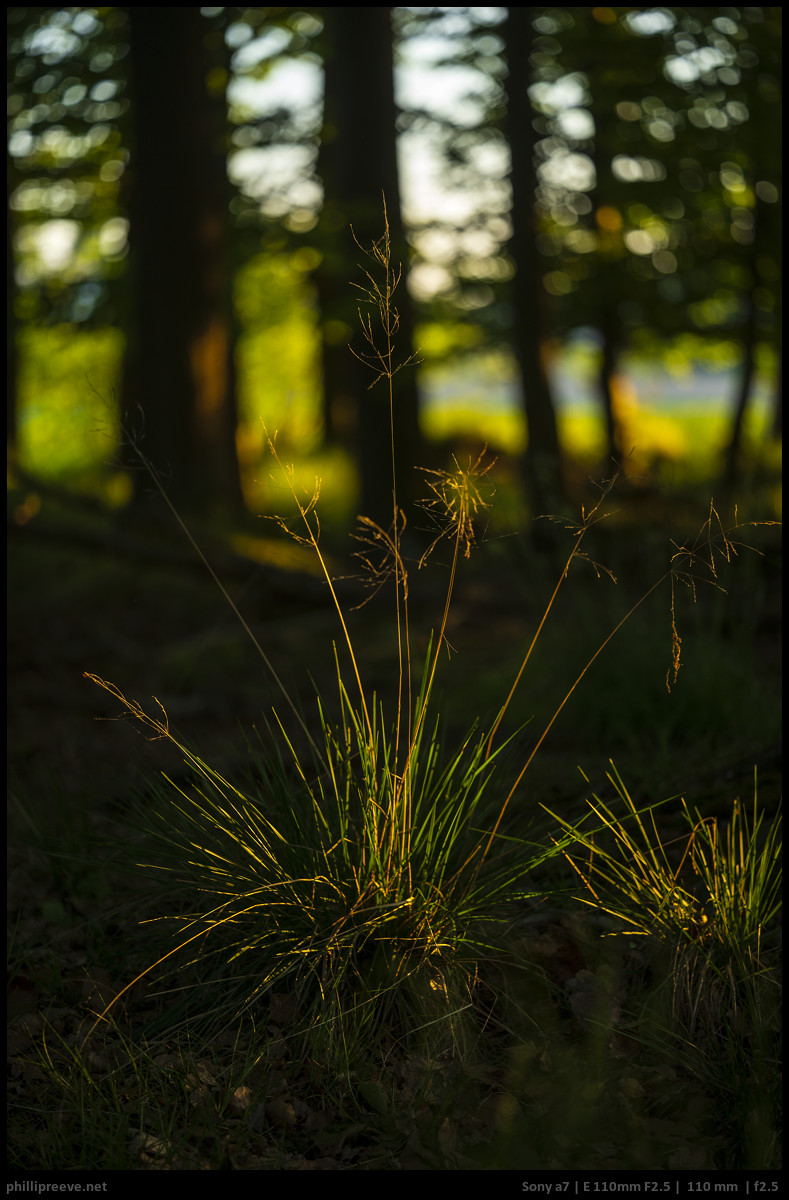
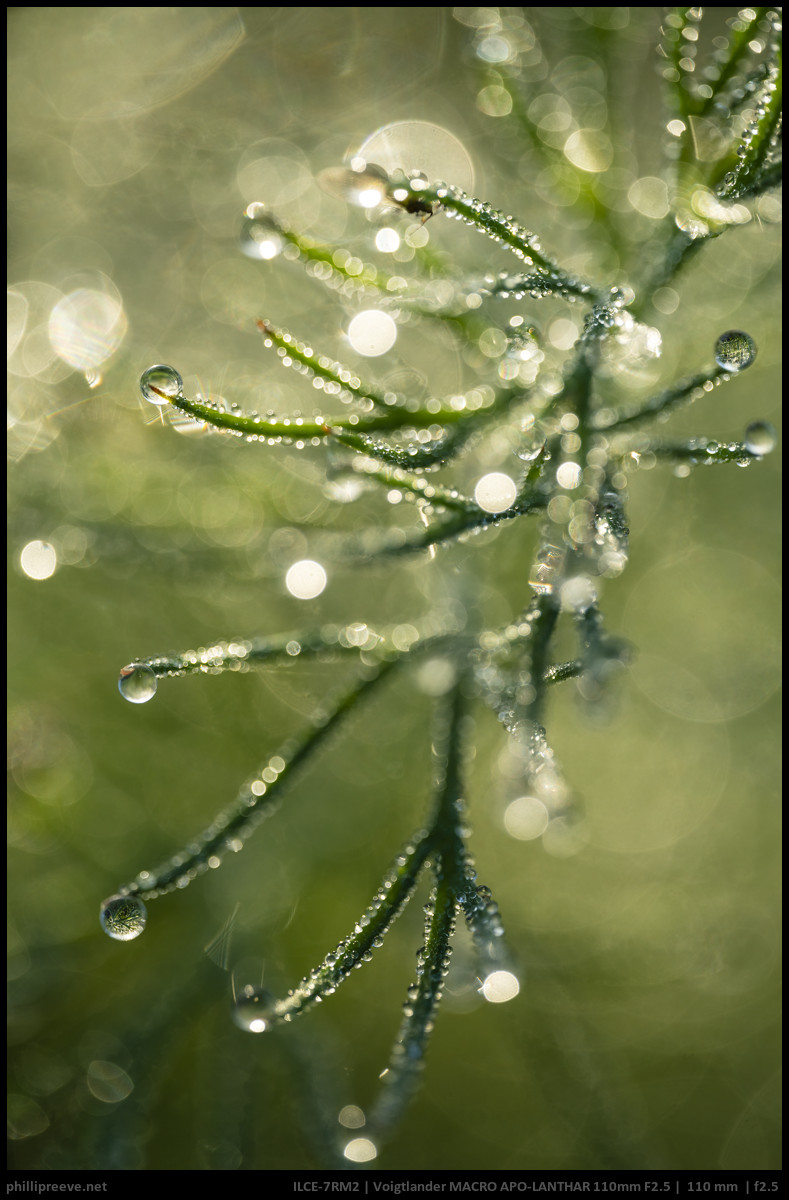
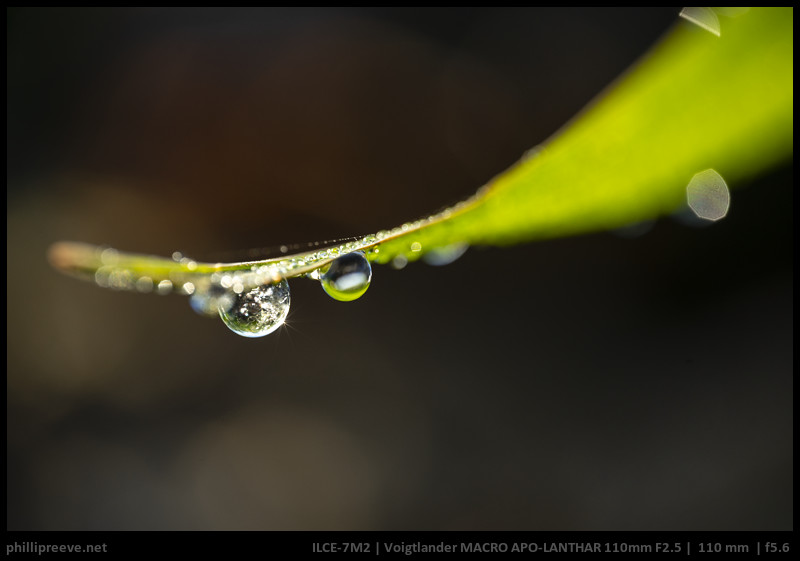
Chromatic Aberrations
Both Zeiss and Leica Leica have been more lenient with the APO label in the past. But in 18 months of regular usage I haven’t managed to produce a single image with any CA in it. The Voigtlander 110mm f2.5 APO Macro’s level of CA-correction is simply outstanding. Consider this worst case scenario: 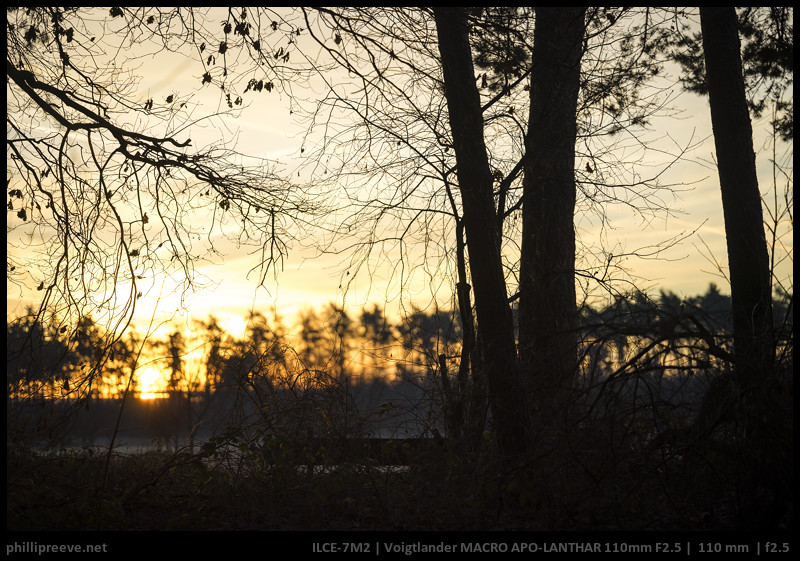
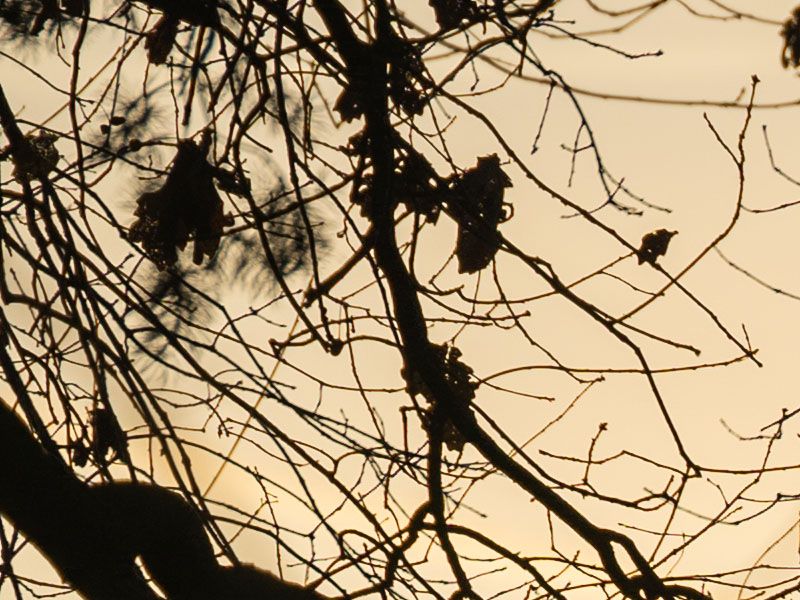
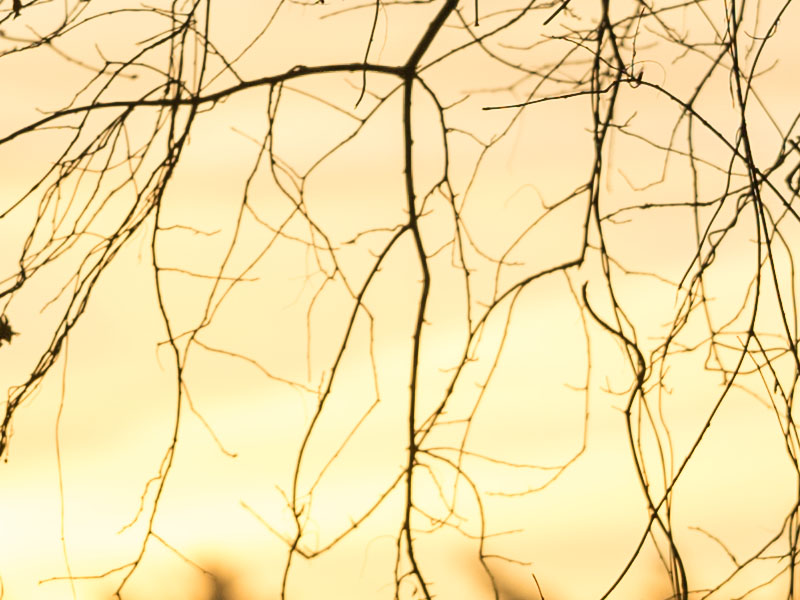
Vignetting
| corrected | uncorrected | |
| f/2.5 | 1.1 ev | 2.0 ev |
| f/4 | 0.6 ev | 1.7 ev |
| f/5.6 | 0.4 ev | 0.9 ev |
| f/8 | 0.3 ev | 0.5 ev |
The true vignetting figures of the Voigtlander 2.5/110 APO are rather high at 2 stops wide open. Only by f/5.6 they fall below 1 stop. Most users won’t notice that though since vignetting is automatically corrected to significantly lower 1.1 stops at f/2.5 even if you shoot raw.
Distortion
The Voigtländer 110mm f2.5 shows a very small amount of pincushion distortion. It will hardly ever be noticeable in you image and if it is the supplied profile corrects it perfectly. Still most other macro lenses show no visible distortion at all.
Sharpness
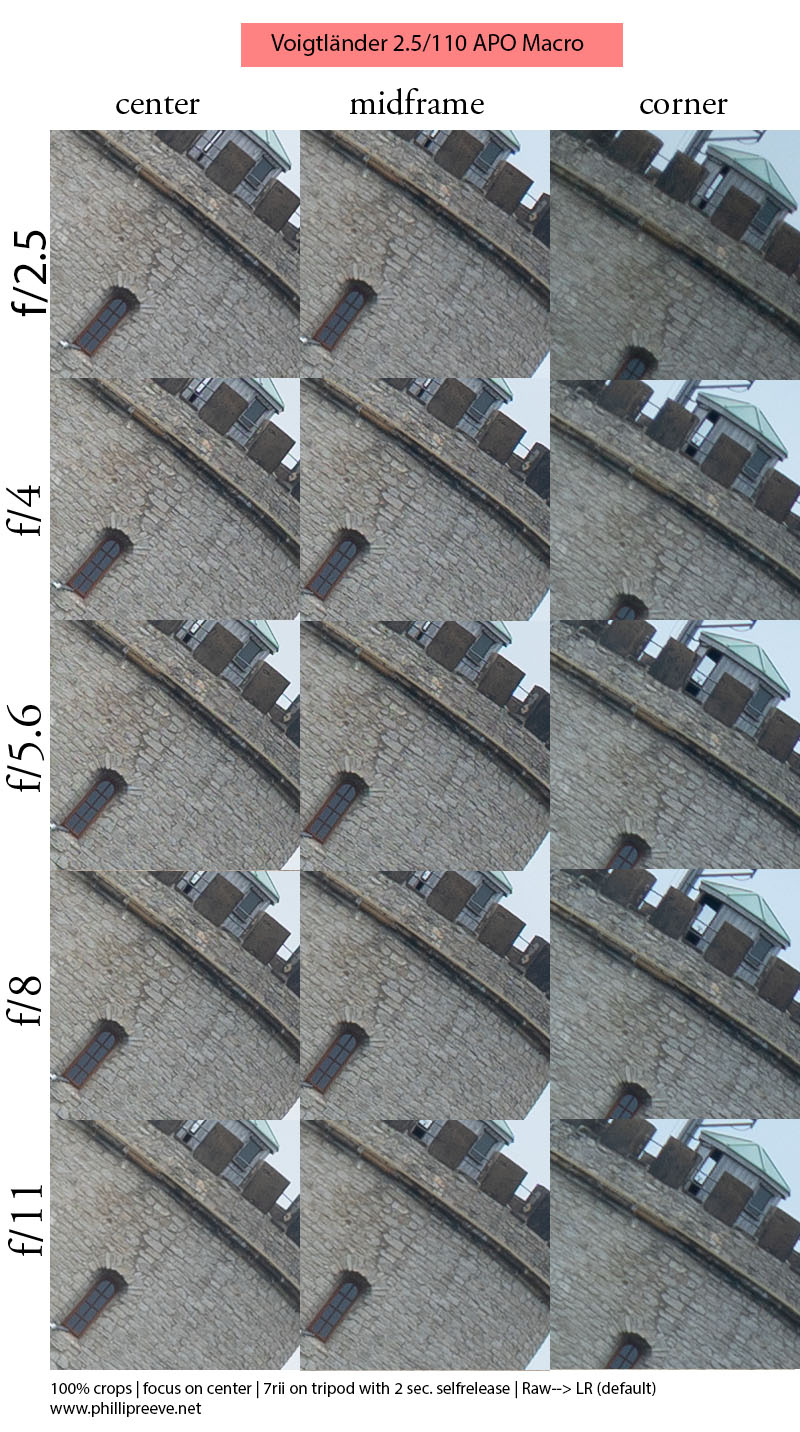
f/2.5: Excellent in the center, very good in the midframe area and good to very good in the corner.
f/4: Excellent center and midframe, very good corners.
f/5.6: Excellent across the frame.
f/8: A tad softer everywhere due to diffraction but we are still in excellent territory.
f/11: A tad softer but still on very good level.
All in all an excellent performance.
Notes on macro use
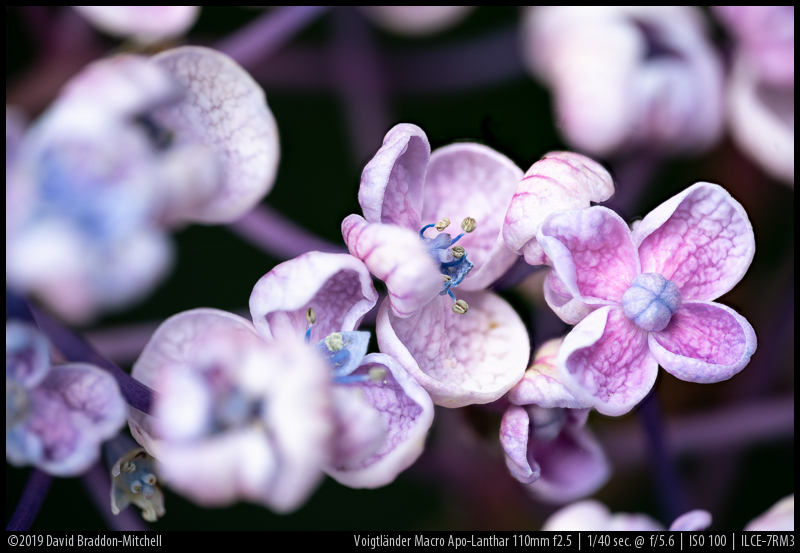
When we first published this review, we promised an update with careful macro tests.
That never came – we should explain why. Testing macro lenses in their macro range accurately is a very difficult business. If you use the lens lots you can get a very good idea of roughly how it performs, and how it compares. We’ll share those impressions with you after this introduction. But impressions are not detailed tests that we can show you, and which are the evidence you, the reader, can use to judge for yourself.
But the problem is that most tests you see online of macro lenses are essentially useless. The problem is that if you are interested in flat field performance, there are only two ways you can do it. The first is to have an optical bench, but that costs up to a million dollars, and is far out of the reach of mathematics teachers, engineers, professors and scientists doing this out of love – and that’s our team! The other is to have a target of extremely high resolution (sometimes we use banknotes, but at true macro distances even they aren’t really precise enough) and they need to be on planar surfaces. They also need to be help parallel to the sensor with extreme precision. An etched glass slide with target markings which can be held in a slide duplicator at the correct angle would do. These are very expensive as well from lab suppliers, but perhaps not impossibly so.
So we were hoping to do something like that. But it hasn’t happened for reasons of time, and maybe money. But we can share with our impressions, and add some more samples.
We are fairly sure now that from life-size samples like the one above that its a superb macro lens. It seems a touch sharper than the Sony G 90mm at long distances, and at least as sharp as that impressive lens when you reach 1:2. At life size the Sony 90mm is a touch sharper, has nicer bokeh, but a tiny touch more CA. If I was only shooting at 1:1 I would probably choose the Sony, though the CV is nicer to use. As a general purpose lens for the manual focus lover the CV is a better bet.
A significant advantage to the Voigtländer is that it has a much longer focus throw. Although the Sony has a remarkably good manual focus experience for an AF macro, the throw is, while linear, a bit short in linear mode, so it’s harder to make small precise changes (and less importantly less pleasurable to use because not as buttery smooth).
The effective focal lengths are rather different at macro distances. The Voigtländer I estimate to have roughly a 27 degree diagonal field of view on a full frame sensor, the Sony 34 degrees (this means the Sony has an effective focal length of around 70mm, the CV 90mm, so both lose a bit: which is surprising in the case of the CV given how much it extends). This means the CV gives a noticeably more telephoto perspective, magnifying the background relative to the subject of macro shots a little more, which serves to isolate the subject. It also, of course, affects working distance: you can keep the front of the lens about 4cm further away from your subject on the CV rather than the Sony, which may be of use for bug hunters.
People who do a lot of handheld close macro may like to use AFC on the Sony so as to help cancel out small movements towards and away from the subject. This, combined with IBIS, may give you a slightly higher keeper rate. But it’s not a big deal.
Bokeh at Macro 1:1
The bokeh at life-size (1:1) is very interesting, comparing the Sony and the CV. This is a complex matter, because there are at least three scenarios that need testing.
(1) Lens set to same magnification, bokeh elements at same distance from sensor.
(2) Lens set to same magnification, bokeh elements at different distances to sensor corresponding to the different camera position for the same subject to be in focus (remember 1:1 corresponds to a different postion of the image plane in these two lenses)
(3) Lenses set to somewhat different magnification, focussed on elements the same distance from the sensor plane. (recall that if you focus on items the same distance away, the magnifications will be different between the two lenses.
We have tested Scenario 1.
Wide open there doesn’t seem to be much difference in the shape of the bokeh (i.e. much difference in cats eye effect). But oddly, the bokeh balls are much larger in the Sony (probably an artefact of scenario 1 – I leave it as an exercise to figure out why)
But by f5.6 cats eyes are noticeably more visible in the CV:
CV on left, Sony on right.
This result, and some others, makes choice difficult. By f5.6 the Sony is starting to show visibly nonagonal shapes. The CV is showing even (slightly) more visible decagonal shapes. At wider apertures, the Sony is ahead, at this aperture to my taste there is not much in it.
But the cats-eye distortion of the CV bokeh rugby balls is less to my taste than the more rounded Sony shapes. On the other hand there are some (very mild) polishing artefacts visible in a couple of the Sony bokeh balls.
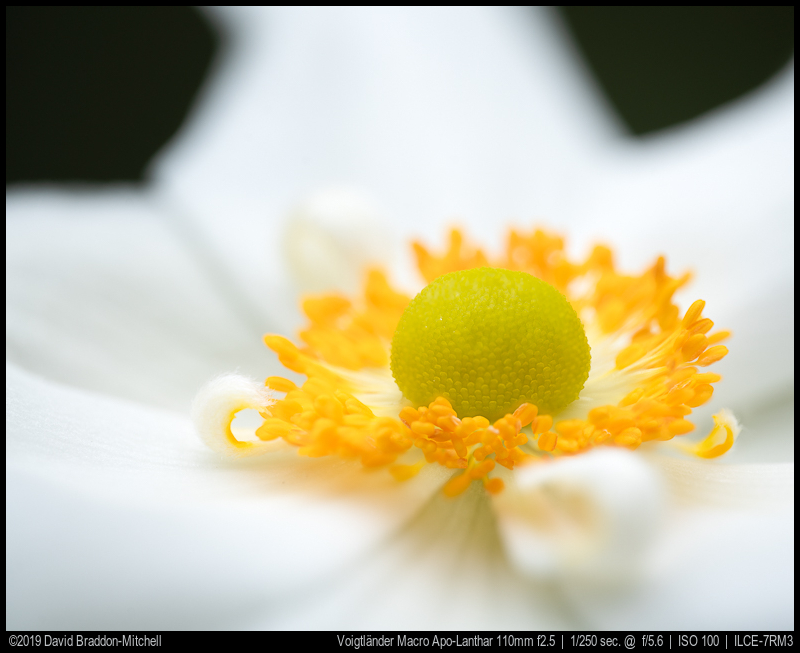
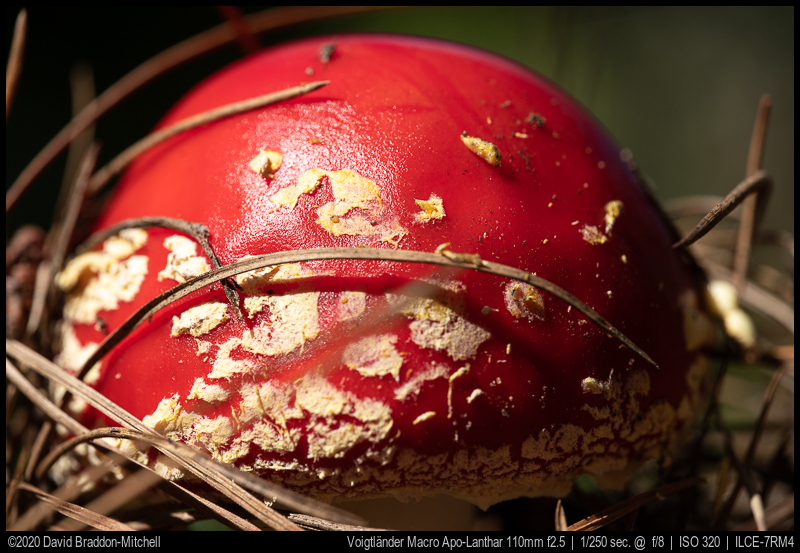
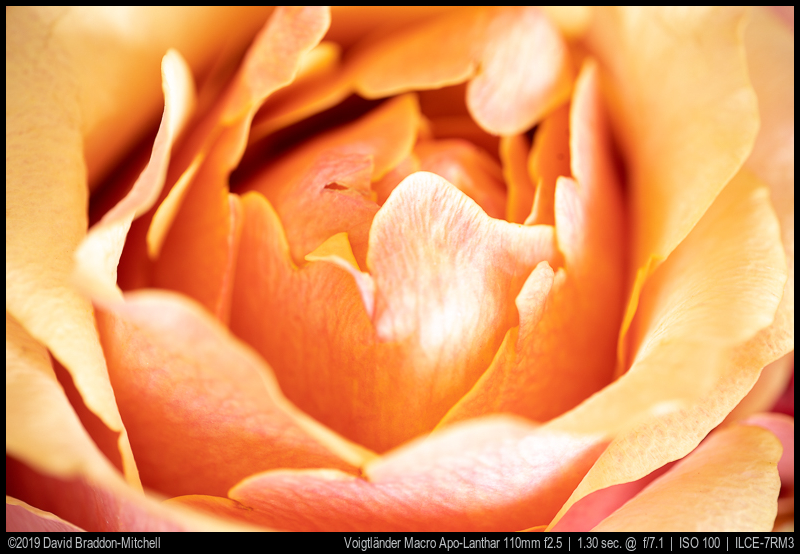
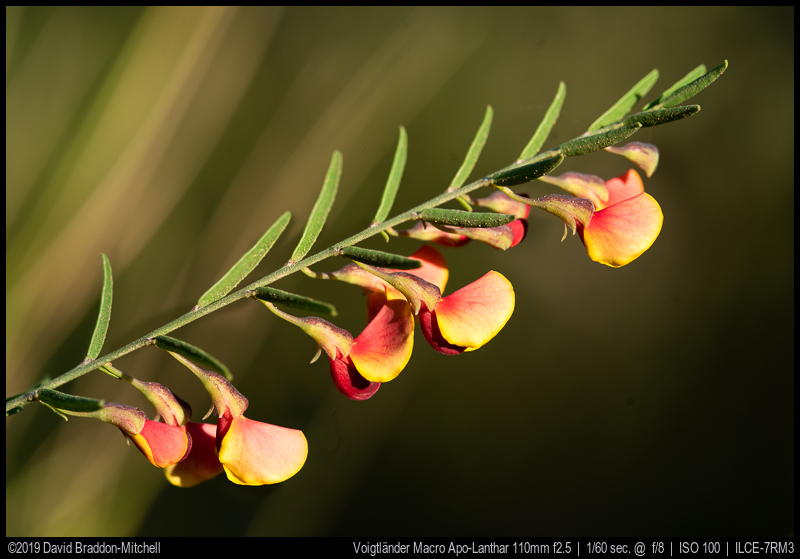
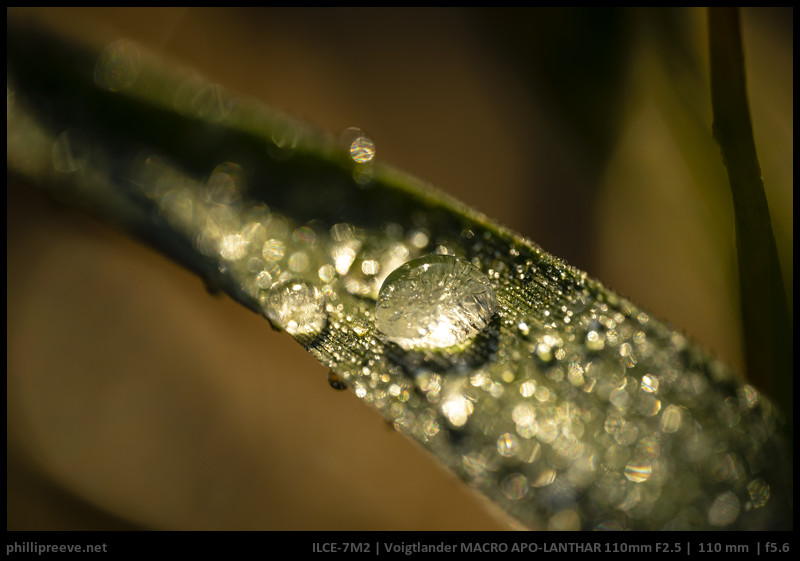
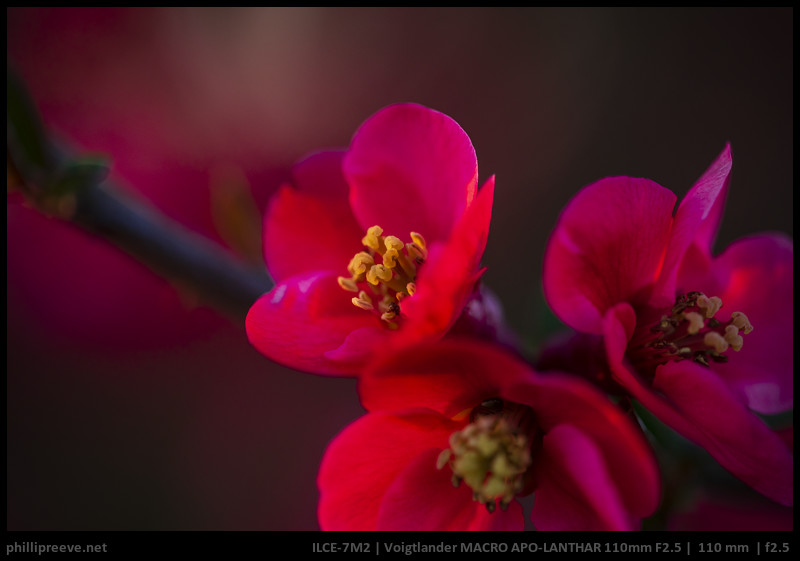
Brief Comment on Portrait Use
Phillip and David have both used it a fair bit for portraiture, and it shines. Hard to share these with you, because of getting permission. But David’s friend Annie was happy to apply her pawprint to the paperwork, so this may give you some idea of what it’s like:
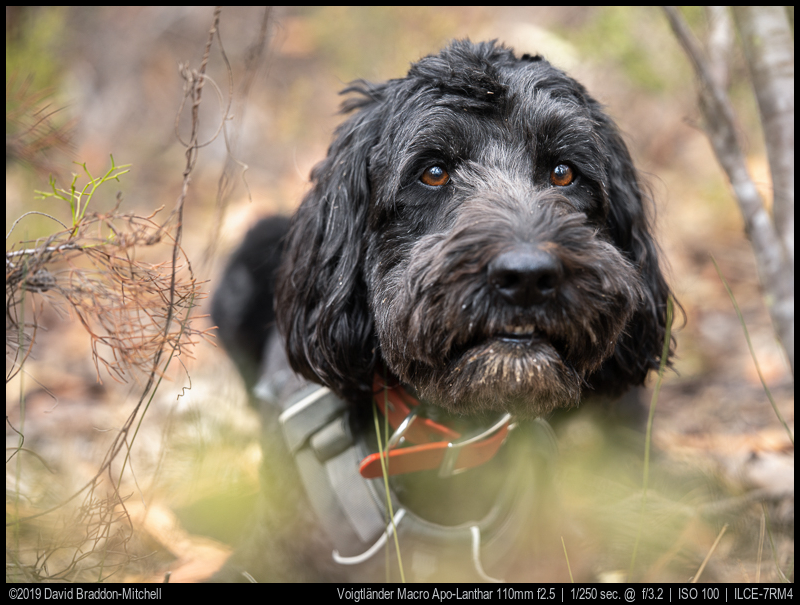
Alternatives
Sony FE 2.8/90 Macro: The 180g heavier Voigtlander is even better corrected for CA and offers a longer working distance (17 cm vs 12.5 cm). Another big difference is that the Sony is an internally focusing AF lens while the Voigtlander is a manual focus lens which extends a lot as you focus closer. Both are excellent lenses optically. The Voigtlander is a bit sharper at longer distances while the Sony has a little higher contrast around 1:1.
Review | 602 g | $998 | amazon.com (affilate link)
Tokina Firin 2.8/100: I had hoped that this would be the budget macro lens for E-mount which would make one ignore the stronger CA and handling compromises but it still isn’t that affordable so that I would usually recommend to save longer and get the Sony 2.8/90 or this Voigtlander instead.
Review | 570g | $599
Zeiss Loxia 2.4/85: The only other manual focus lens in E-mount has a more conventional focal length and only reaches a magnification of 1:7. Both play in the top league in terms of sharpness and the Loxia is very well corrected for CA but not quite as well as the Voigtländer. At ~600g the Loxia is about 180g lighter than the Voigtländer but still rather heavy for a lens with this moderate speed. At least new it is also more expensive.
Review | 594g | $1399
Zeiss Batis 2.8/135 Apo: Both lenses are as close to technical perfection as currently possible with similar aperture and focal length. The Batis is a little larger, the Voigtländer a little heavier. What sets them really apart are not the optics but that one offers AF while the other one offers a superior manual focus experience and much better close focusing capacities.
Review | 614 g | $1699 | at B&H (affiliate link)
Tokina 2.5/90 Macro: A legacy lens which is a lot more affordable (still not that affordable for being more than 20 years old). Flare resistance, CA correction, and off center sharpness at f/2.5 are what is most notable in comparison.
Review | ~630 g with adapter | about $300 used | at ebay.com (affiliate link)
Zeiss Macro Planar 2/100: A more affordable manual focus macro which is an excellent lens with the exception that it shows a lot of CA. It also only reaches 1:2 magnification. If you aren’t very sensitive about CA it might be an alternative.
MTF-data | Review | 660 g + adapter | about $750 used | at ebay.com (affiliate link)
Laowa 100mm f2.8 2x Macro: A lens which goes to 2x and which is very sharp indeed, especially in the macro range. If you need a short telephoto lens with 2x magnification which also focusses to infinity, it’s the only game in town. If you mainly care about 1x to 2x this lens is cheaper and just as sharp. It’s not quite as sharp as the Voigtlander at infinity, and has noticeably worse contrast under normal conditions, and is easily subject to veiling flare.
Review | 657g | about $450 | B&H Photo or eBay.com (affiliate link)
Zeiss ZE/ZF/Milvus APO 2/135: Also a modern manual focus lens which is faster but only focuses down to a magnification of 1:4. With adapter it is almost 300g heavier but at shared apertures it has less pronounced cat’s eyes, a longer focus throw and of course it can isolate the subject even more so it is an alternative for some applications like portrait photography.
Zeiss C/Y 3.5/100: If your focus is on landscape photography the much smaller and more affordable Zeiss could be a good alternative since it will take really large prints to actually see a difference for that application.
Review | ~380g with adapter
Sony GM 1.8/135: Sony’s sharpest lens also plays in the first league optically but its specs target it at other applications.
Review | 950g | $1899
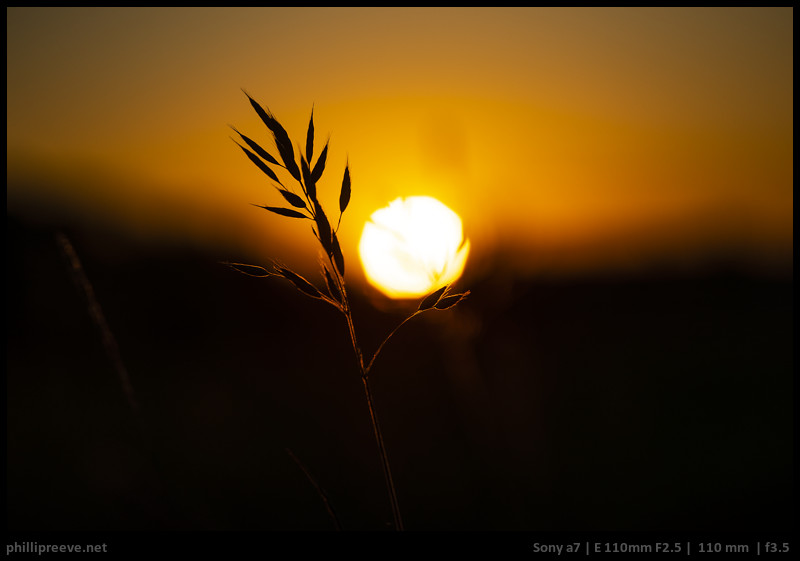
Conclusion
pros
|
average
|
cons
|
Optically it is hard to find any real fault with the Voigtlander 2.5/110 APO Macro beyond a few minor compromises like vignetting and some flare which any longer lens will display. CA correction and sharpness are simply outstanding. Bokeh is very good, only the decision to use straight aperture blades becomes a bit bothersome if you work stopped down. As expected of a macro distortion is corrected to a very high degree. Overall very few lenses perform on this level.
Voigtlander lenses still set a gold standard for handling and the 2.5/110 APO is no exception. Everything is as it should be but there are a few trade-offs caused by this being a macro lens: It is rather larger and heavy for a 2.5/110 and the focus transmission is a bit on the steep side at longer distances. Also mentioned should be that all other lenses in this price class offer some degree of weather resistance.
Overall the Voigtlander 110mm F2.5 APO Macro is technically among the very best lenses you can buy with outstanding sharpness and CA-correction. Handling of this manual lens is a joy but as macro the Voigtlander is of course bigger than a non-macro lens. The price matches the performance: This is an expensive lens but only until you compare it to other high end lenses.
Recommendation
For the last 18 months the Voigtlander 2.5/110 has been part of my standard all manual kit together with the Voigtländer 3.5/21 and 1.2/40. Optically this lens is so good that I never felt that a shortcoming of the lens degraded my image. That is a very rare experience. I bought it because I wanted a native manual focus tele with which I could cover a wide range of applications and maybe also because of its performance. At times I wished it wasn‘t a macro lens and 200g lighter but then I find a small detail in nature and am reconciled. I am very happy with the 2.5/110 APO for landscapes and details of nature in general. It also works ok when I need to shoot a portrait: I shot two weddings with it and was happy with the results. At times I wished the focal length would be a bit shorter and I still hope on a 2/90 APO from Voigtlander to go with their outstanding 2/50 but until then the 2.5/110 will have a safe spot in my kit.
So if you also have a clear preference for manual focus lenses, aren’t too weight sensitive, can integrate a 110mm lens into your kit and are also willing to pay about $1k, then I can only recommend the Voigtlander to you. Now that were a lot of ifs and I am not too surprised that the Voigtlander 2.5/110 has stayed a niche lens since few people are willing to work without AF at this focal length even when it is a lens as optically outstanding as the Voigtlander 110mm f/2.5 APO.
If you are looking for a macro lens, then the significantly longer working distance can be a deciding factor when shooting insects and the superior CA-correction can make a difference when shooting metallic objects. The Sony 2.8/90 on the other hand offers AF which makes it a better allrounder for many and it is also a tiny little bit sharper with higher contrast at 1:1.
For landscapes the somewhat smaller and lighter Loxia 2.4/85 should be considered since it is a bit lighter and probably integrates better into most kits. Optical performance is very similar for this purpose. On the used market the Lox is a little more affordable. The downside of the Loxia is that isn’t a macro and also offers less blur for portraits so adapting the lighter ZM 4/85 or even Voigtländer 1.5/75 should als be considered. If you are not that weight sensitive the GM 100-400 performs as well or even better than the Voigtländer 2.5/110.
As a general purpose tele which has to cover many applications many go for a 4/70-200 which is bigger and comes with a number of optical compromises but of course it offers AF and a wide zoom range. Sony’s GM 100-400 comes with few optical compromises but it is a lot bigger and also more expensive. For many a simple 1.8/85 will do the job but personally I only bring mine if I really need AF since image quality and bokeh as well as handling of the Voigtlander are so much nicer. For those who want the excellent IQ of the Voigtlander but prefer AF the Batis 2.8/135 is a logical alternative.
$1099 at CameraQuest, Amazon.com, B&H, ebay.com (affiliate links). If you purchase the lens through one of these affiliate-links we get a small compensation with no additional cost to you. If you are in Australia you can purchase it from the Australian distributor, Mainline Photographic for AUD 1595.
More Image Samples
You can many images shown here in full resolution in this flickr set: Voigtlander 2.5/110 APO.
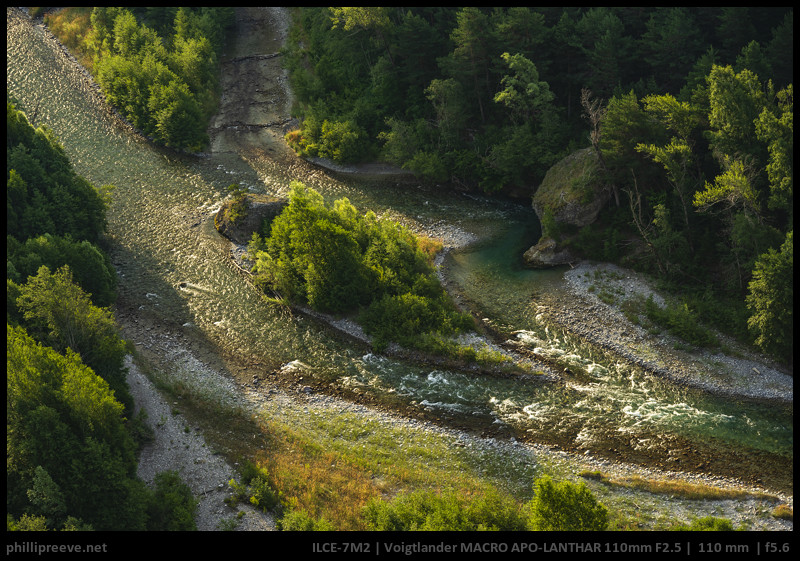
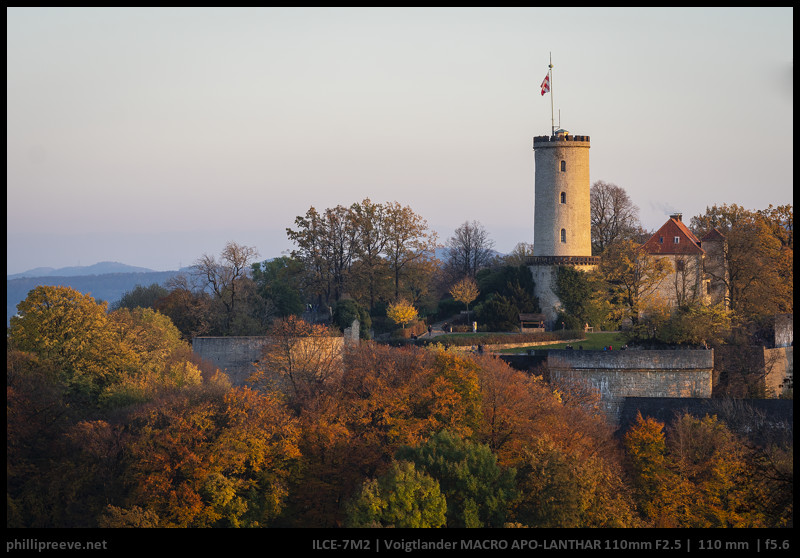
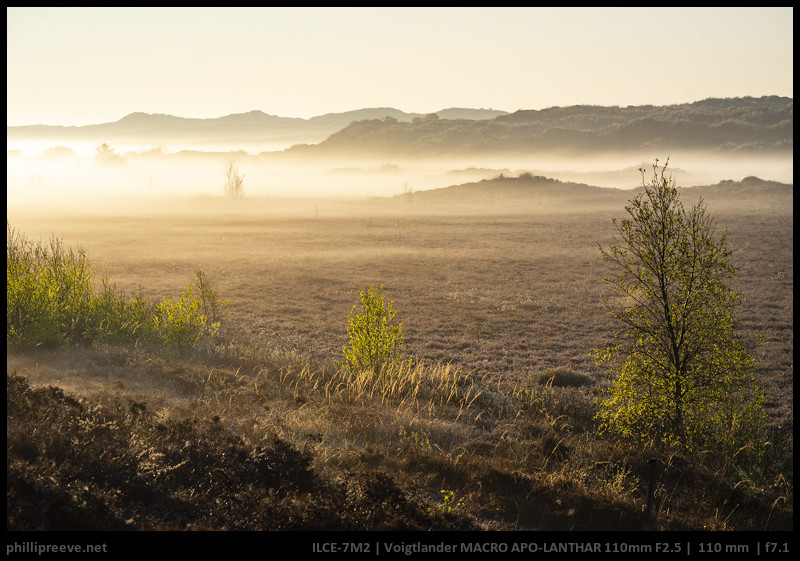
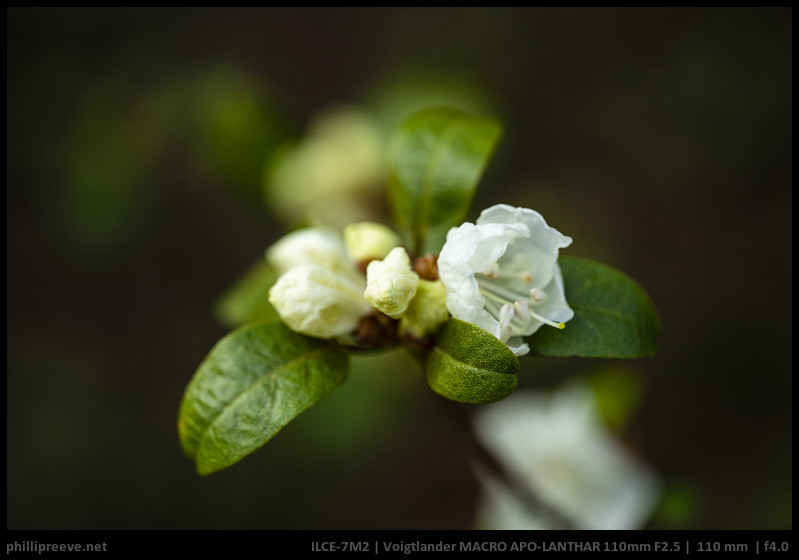
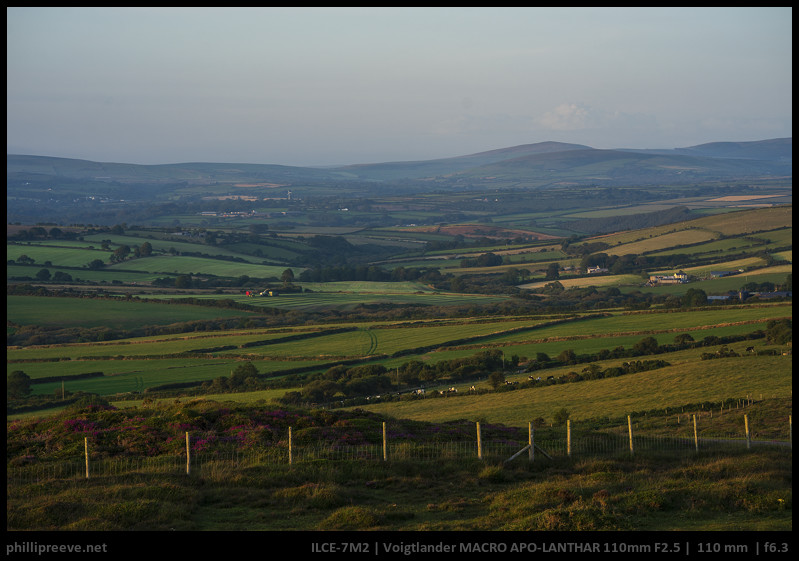
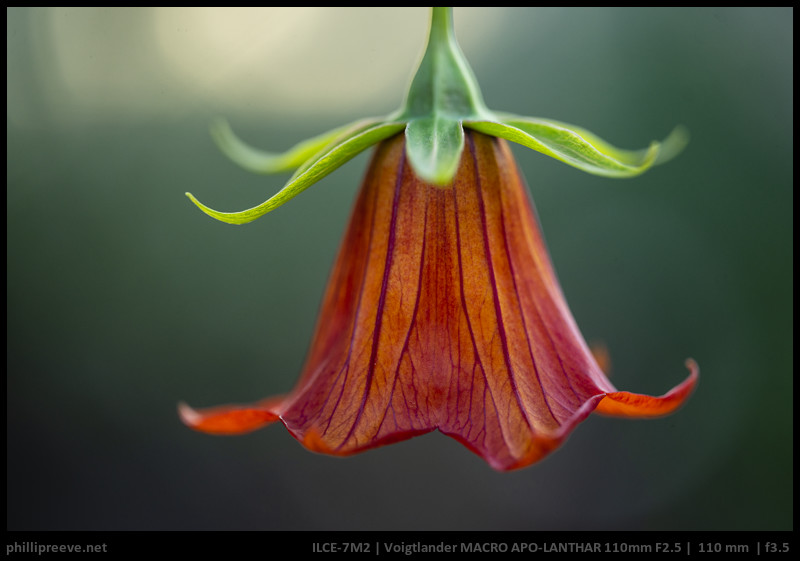
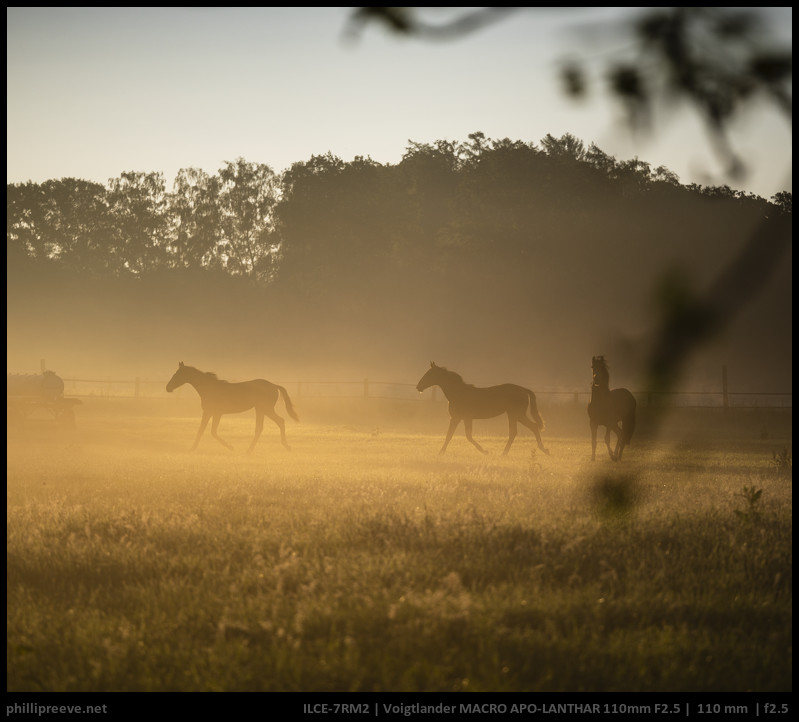
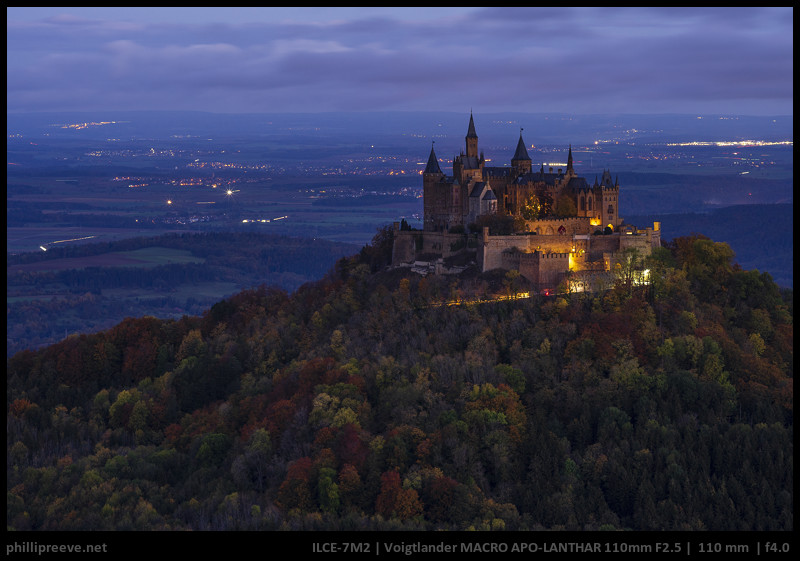
Other articles
- Guide to Macro Lenses for the Sony a7 series
- Review: Sony FE 2.8/90 Macro G OSS
- Review: Voigtlander 65 mm F2 Macro APO-Lanthar
- Review: Zeiss Batis Apo Sonnar T* 135mm f2.8
Latest posts by Phillip Reeve (see all)
- Review: Samyang AF 75/1.8 FE - April 12, 2021
- The FE-List now has 113 lenses on it - March 25, 2021
- 2020 – Year’s end review - December 28, 2020

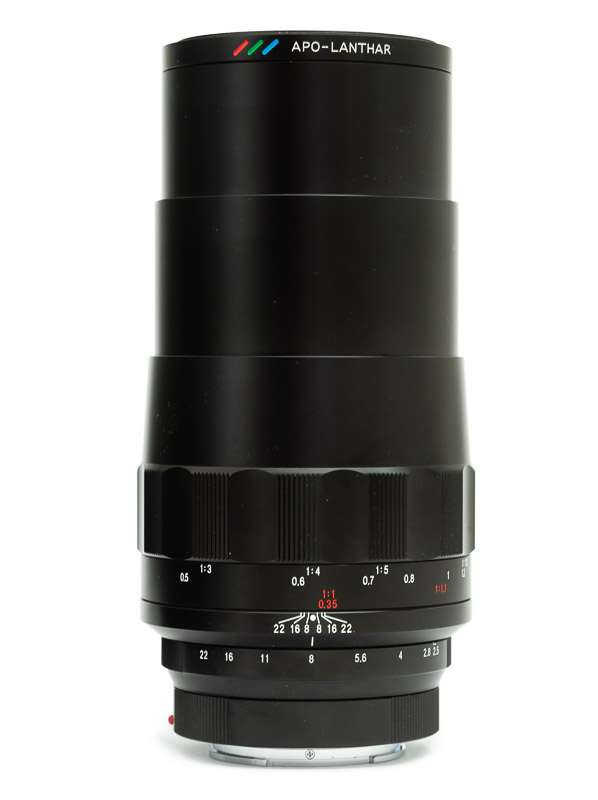


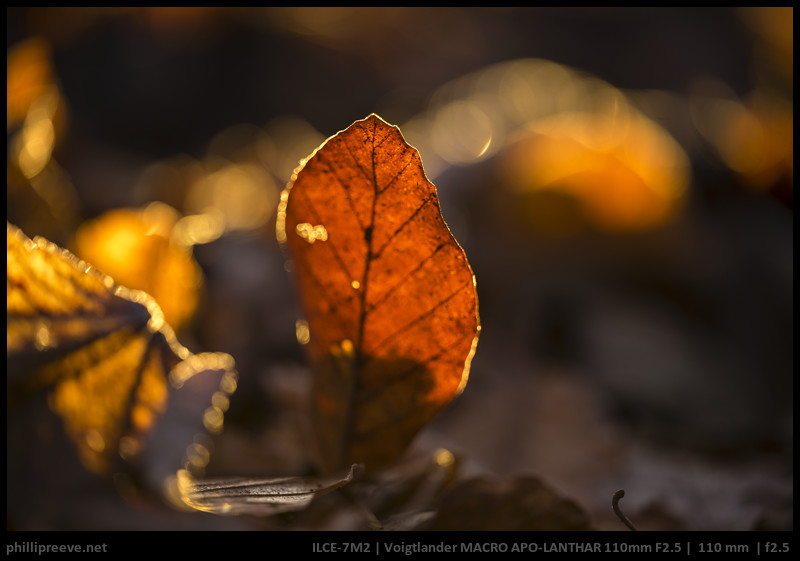

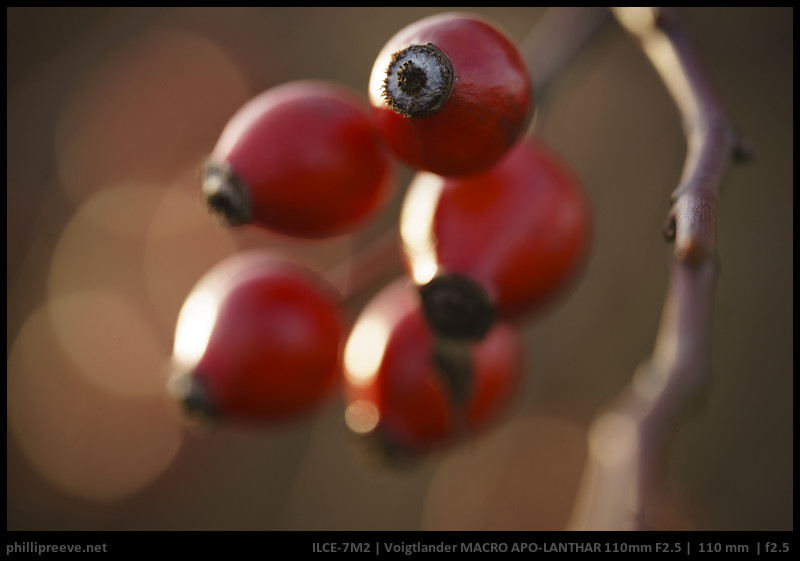


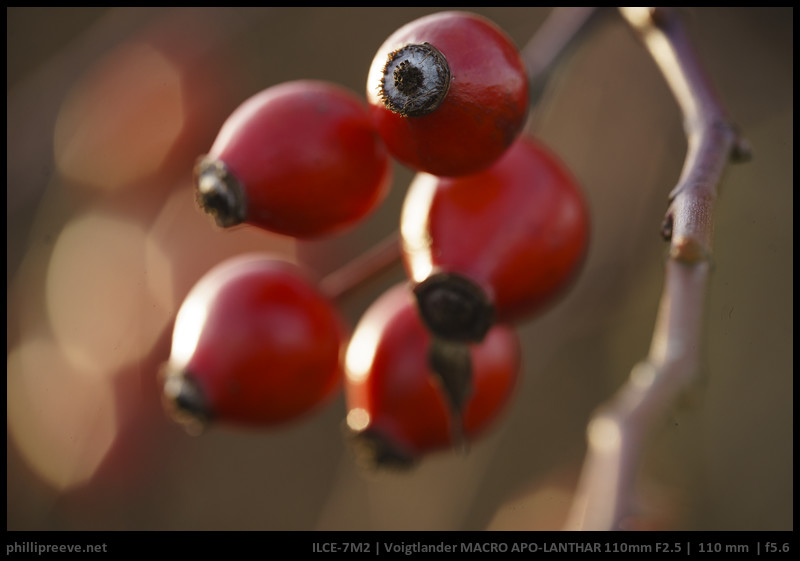





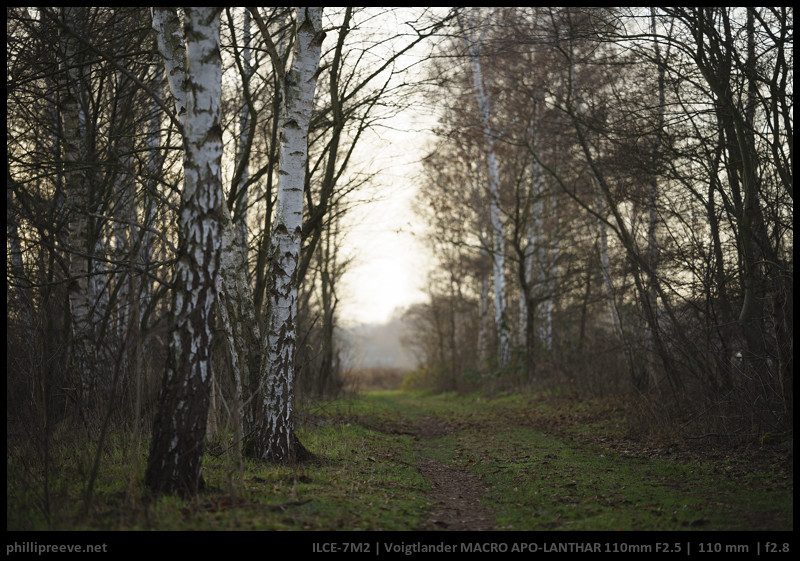
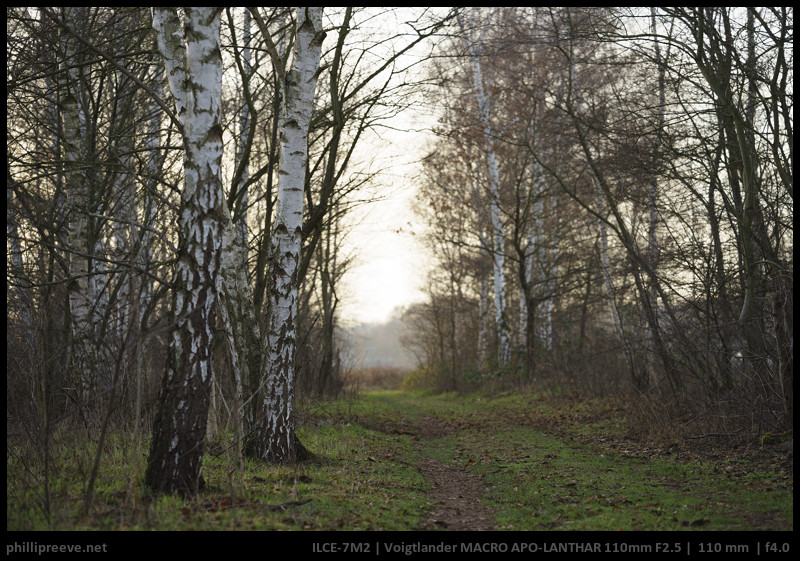


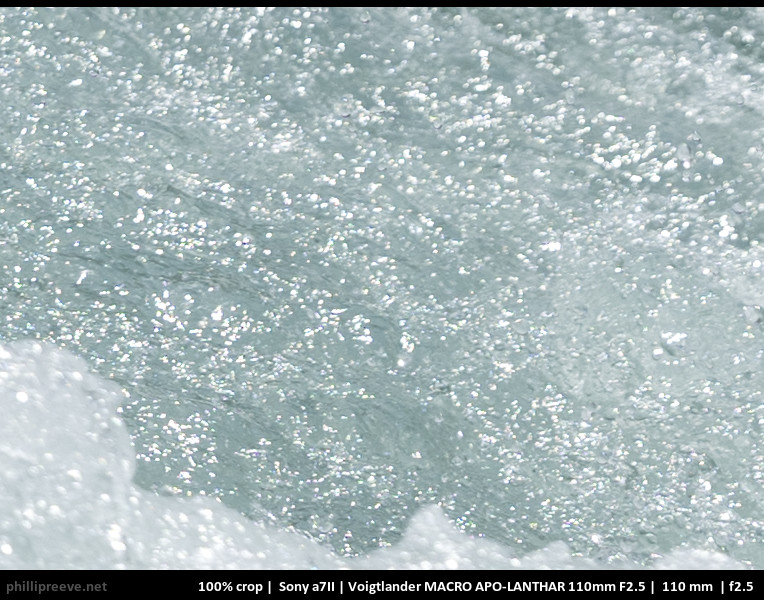


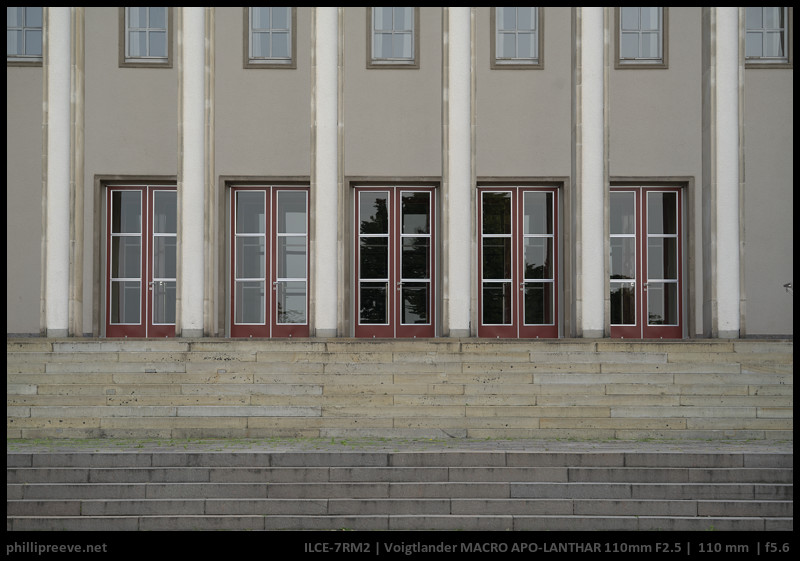
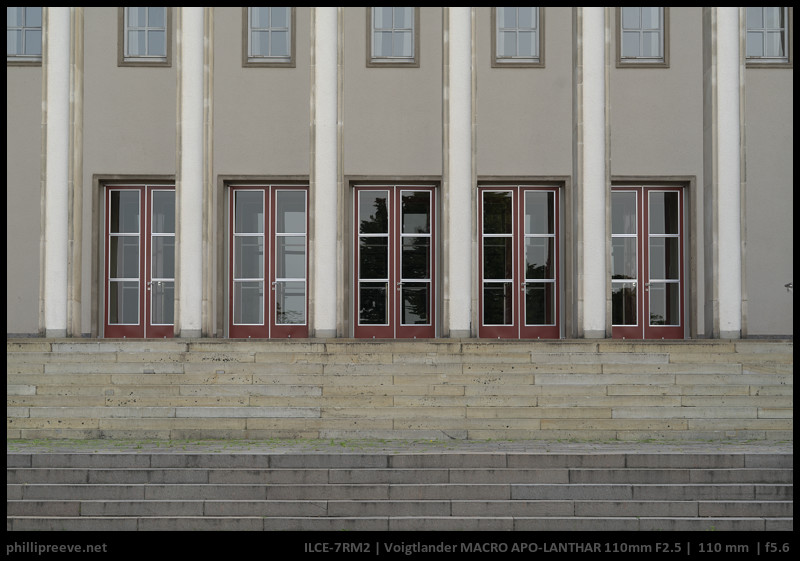

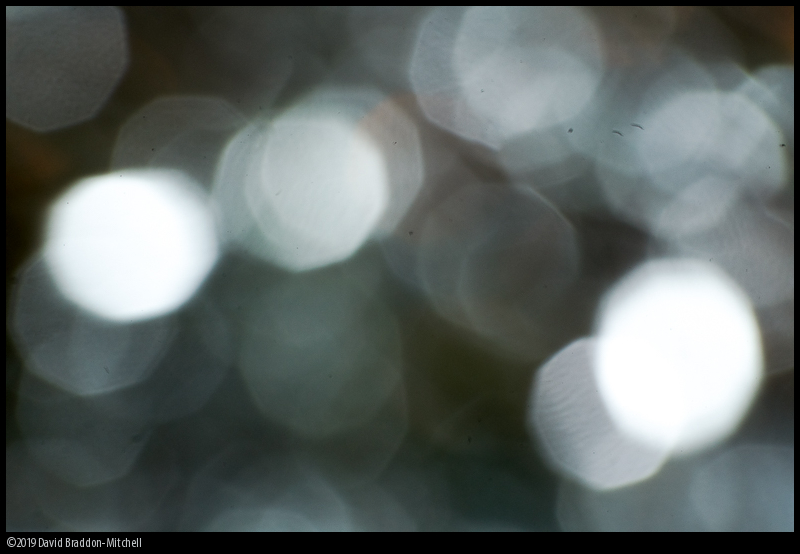

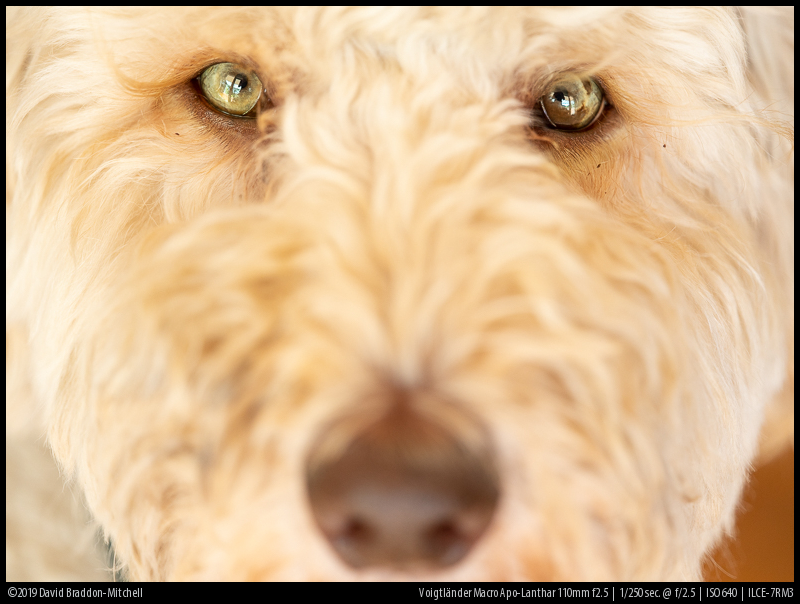
Many thanks for this report, I have been wanting to see life-signs from this lens since the pre-order was delayed, and Cosina hasn’t been up front about the reasons behind the delay, nor an up-coming release date.
Is the surprising length the 110mm Apo Lanthar extends to, a sign of a long focus throw, as in the 65mm Apo Lanthar?
Much looking forward to know about the qualities of this lens, and if the positive expectations the 65mm Apo Lanthar motivated, justified the pre-order.
There’s actually nothing surprising about the length of this lens at close focus; it’s the length you would expect for a non-internal focus 1:1 macro of this FL. It’s the traditional design approach. The downside is the amount it extends. The benefit is you tend not to get effective focal length reduction at high magnification, and the length of the lens focussed arbor hear infinity is usually quite a bit less than IF non extending designs.
Also, a comparison with the Zeiss Batis 135mm (or the preceding 135mm f/2 Apo Sonnar iterations), being another apochromatic lens in a more or less similar focal range, would be quite interesting.
Schöne Grüße!
If I end up with a copy of this to review first I might do brief some comparisons with those lenses – I do have them available – but my prime interest will be comparable tele macro lenses. If Phillip gets one first I suspect he will have a similar focus.
Thanks for the brief and enlightening explanation, David, will stay tuned for your upcoming account of this promising lens.
I’d love to see how this lens does with macro beauty shots, as the 65 has too short of a working distance, which causes issues with flash and shadows
According to latest disclaimers from adorama, the 110mm f/2.5 Makro Apo Lanthar will start shipping today. Hopefully you’ll have a copy up for review soon; would much like to see a comparison to the Milvus Planar 100mm f/2, if possible.
The Zeiss is not an apochromatic lens and only does half the magnificatoon of the Voigtländer, but it makes a fantastic telephoto lens for architecture and landscape – the use I would mostly give the Voigtländer, and I suspect many others would too.
Both lenses are very similar in size and weight, so nothing to fuzz about there. If the performance is similar to the 65mm f2 Apo Lanthar, I can hardly imagine anyone whining about carrying it in their bag. If the performance bests the Zeiss, Voigtländer will have added yet another very compelling makro – and multi-purpose lens – to the E-mount universe. Fingers crossed!
I can only agree. The CA made me sell the MP 2/100 and the CV 2.5/110 could be a very universal lens. Both David and me will have one to review soonish and look forward to it.
Got my copy today and was able to shoot it in a few settings.
Some comments in Fred Miranda’s rolling review, with regards to difficulty focusing near infinity and a relatively short focus throw, had me a bit worried. I passed on the 21mm & 25mm Loxias for that precise reason, and the rather frustrating and fiddly overall experience working with these lenses. I decided that if there’s one thing I would not sacrifice for form factor, portability and compactness, it is a satisfactory and enjoyable experience. (I went with the 16-35 GM instead, which has a nicely implemented focus by wire, and although color and contrast are not as good as the Loxias, and 10-bladed sunstars aren’t included, I found it resolves noticeably more – even towards the longer end – and ultimately offers a more pleasing experience and price/value balance in my opinion.)
Despite similar comments with regards to the 65mm Apo Lanthar, I find it significantly easier – and enjoyable – to focus with both Apo Lanthars. I agree that it takes minimal movement to throw you out of focus, but don’t see it being a significant difficulty, and don’t feel it is any different than with the 65mm Apo Lanthar.
Color rendition – although a matter of taste – is just as beautiful as the 65mm, and build quality and handling is just as satisfying. So far, so good!
Pushing it hard can certainly provoke fringing around tree branches shot against gleaming water or a bright sky, but nothing I believe unexpected.
I can only hope Voigtländer will offer a 180mm or similar focal length for E-mount, and why not a 85mm, a 40 or 50mm Apo Lanthar lenses (with de-clickable aperture rings)? With the two makro lenses, Voigtländer has made it clear it can deliver exceptional world class optics at a fair price, and I’m sure there’s plenty more where that came from.
Salut!
Francois
The focus throw of the 110 is actually very long. It’s just that with any macro lens, the amount of that throw left near infinity is not large. The 110 is better in this regard than many tele macros (and even some tele close focus but not macros like the cv180). But a dedicated non macro tele is best in this regard. But if you want macro….
Do you still own the 65mm?
I do. But I am not sure if I will keep it.
The one that got the boot this year for me was the 100mm STF. Loved it, but determined I simply did not have enough uses to keep it. However after a year of ownership, the 65mm is still getting a moderate amount of use for me, although I do admit it’s not my most used lens. So far so good. If I make it to the two year mark, then I know it’s a keeper. I rarely make it three years with any lens before switching it out…which probably isn’t a good thing now that I think about it. Ha. Oh well…
😉
Interesting – as someone who has been looking for a normal lens and is saving up for a 65, what makes you hesitant to keep it?
I like to have a 3 lens kit with me and 65mm are a bit short for longest tele. In the end I often packed 21/40/90 and left the 65 at home.
The 65 is optically lovely. I’m hanging on to it, but if it ever goes it’ll be because it’s a bit big and it’s not even a true macro, only 1:2. I’d prefer a less close focussing 50 of similar quality (like an even better Loxia 50) that is smaller, and then have the macro in the longer lens.
But in both Phillip’s case and mine it’s a question of how it fits into our kits, not the lens itself. If you are saving up for it, it must fit with your kit. In which case you won’t regret it. It is remarkable.
Good point! I’m actually in the process of planning out a new kit. I bought the Sigma art 35, which is a reliable performer, but boy is it an absolute unit of a lens. So I’m replacing it with the CV 40 based on your review and seeing how that goes. Depending on if I like it, I’ll have to work out what other FLs may compliment it. If i’m not careful, I could end up with a bag full of Voigtlanders ?
I think the problem in a three lenses kit is its size. For instance, I have the loxia 25mm and would consider adding the CV 65mm, but as it’s kind of a short FL I would miss the 110mm or even a 85mm… I tend to agree with David: a redesigned loxia 50mm would be perfect to fill the gap, so let’s wait a bit (and see what CV does with the new CV 50mm 1.2). 25mm + 50mm + 110mm would be my 3 lenses kit therefore.
These images are to small (I mean resolution) to examine them and see momething. They are useless.
Try the flickr link where most of them can be found in full resolution 😉
Seems so close to a perfect portrait/macro lens, and then they had to use straight aperture blades…
Nice to see your review is rolling!
Got my copy last week and have had some phenomenal time enjoying this wonderful lens – it’s everything I had hoped for. Compliments to Cosina/Voigtländer on this veritable gem!
Haven’t put it through any torture tests yet, but no visible presence of aberrations so far, on over 200 keepers.
As a makro lens it is absolutely superb, and I have shot everything hand-held so far, with very few focus misses. Bokeh is wonderful and colors are just as great as the 65mm Apo Lanthar.
I am of course still curious about comparisons with the Zeiss Apo Sonnar 135mm f/2.8 (& f/2), ans to see the results of your up-coming tests and evaluations.
While I agree with you on that “optical perfection by itself isn’t worth much”, from a purely photographic and aesthetic perspective, optical “perfection”, along with superb build quality and design (such as distance encoding for 5-axis image stabilization), are very much worth considering that we pay for them.
Voigtländer has produced fantastic lenses for E-mount, which not only achieve optical prowess, but also character and other desired imaging results, and all at very fair price considering the competition. Quality control is still and issue with Sony GM lenses that cost several times more, and that also has its value.
If lens manufacturers cared for quality along te example set by CV, we would have a different experience altogether as consumers. I have returned and changed over 50 lenses, and although return policies are satisfactory, they don’t replace quality control.
I believe CV could release a comprehensive series of focal lengths in Apo Lanthar designs, and pretty much edge out Zeiss Loxia lenses – which are good but could be much better if the 52mm form factor wasn’t a priority – at a better price and quality. – I sincerely hope they do!
Concurring with the frenchman’s comment above, I would very much wish for a 15, 24, 35, 50, 85 and 180mm Apo Lanthars. I would definitively sell my current lens collection for a complete line-up of Apo Lanthars, and not look back – I wouldn’t worry about size and weight either, for that matter.
Voigtlander is certainly my favorite manufacturer: I bought their 21, 40 and 110 in 2018 and no other native lenses. For for people like me who prefr to focus manually in most scenarios their lenses and especially this one are great.
I have to agree, since I bought my a7RIII, Voigtländer has also become my preferred lens manufacturer.
I have been quite disappointed by Zeiss’ Loxia and Batis lenses, except for the 135mm f/2.8, which I do not yet own. It’s fortunate that Voigtländer has wisely filled the gaps Zeiss has left.
I still shoot my Canon AE-1, and never owned any EOS camera or was particularly interested in autofocus. I own focus by wire lenses like the 16-35 and 24-70 GM zooms, but rarely switch to AF unless I really need it. Moving to E-mount was for me, motivated by the superior manual focus implementation, and the access to the diversity of lenses – especially manual ones – that the E-mount opened up.
Size and weight was not a reason for me to buy into the E-mount. At the moment I am actually saving up for used copies of Otus 55mm and 85mm, to eventually replace my 24-70, along with the 65mm Apo Lanthar. I would much prefer a pair of slightly slower 50 and 85mm Apo Lanthars from Voigtländer, but I’m not convinced CV will go in that direction. One can of course always hope.
I think optimum optical quality, balanced with reasonable size and weight, without giving up IQ for silly compactness or form factor pretensions, is the best approach, and I think CV nailed it right on with the Apo Lanthars in this respect.
I make the effort to get out in the field with a perhaps rather heavy bag, but that’s for photography. If it’s hiking I’m out for, I just bring my binoculars and my Huawei P20 Pro. I don’t confuse the two 😉
Cheers!
Loxia 21mm is excellent
Ditto.. 21, 40 and 110 in 2018 – No other native lens 🙂
Apart from these – C/Ys 35-70 3.4, 85 1.4, 135 2.8,
Then Pentax K 28 3.5 on your recommendation – thank you and Voigt 90 3.5 AIS
Cheers
Saurav
Would like to know how it compares against the Voigtlander SL 125mm f/2.5 Apo-Lanthar and if it is worth switching over,
Well I don’t have one handy nor the time to compare them if I did ;).
At the current used prices and with some reports about longevity issues of the 2.5/125 I would probably upgrade anyway.
Dear Phillip, thank you for your reviews on so many nice lenses – short question: What exactly do you mean with longevity issues of the Voigtländer 125mm f2.5 SL lens, that there are no spare parts available, or something else (lens separation, coating issue)? As I think the build quality of this lens is really excellent. Happy to get a response and best regards from Austria
A few too many reports that lenses broke.
I don’t have one to compare. I did try it once years back – though it was much better colour corrected than the Makro Planar 100, but not any sharper and maybe a touch less contrasty.
I really shouldn’t say this without comparison, relying on vague memories (plus some guesses about optical progress) but I’d be very surprised if the new one isn’t quite a bit better. Given the price and rumoured fragility of the old one, you’d need to be a historical collector to get that instead.
Hi David,
Many thanks for the preliminary comparisons and the reply to one of my comments above.
The mentioned fragility of the CV Apo Lanthar 125mm caught my attention here. I have been thinking of getting one and had not come across references to fragility or longevity issues. Would this also apply to the 90mm and 180mm CV Apo Lanthars of similar build quality?
It’s hard to tell whether CV will release a 125 or 180mm in E-mount – or further focal lengths (I’d love to see 15, 21, 28, 50 & 85 Apo Lanthars) – in the future, so I was thinking of getting the 125mm legacy as well.
Thanks again for your efforts!
camilo
You mean the f3.5 90mm? I have one. It’s great and built solid. Using the Nikon version with adapter on E-mount. It’s also quite reasonably priced. And smallish.
The biggest difference might be the rounded 9 aperture blades with SL 125mm vs 10 blades with 110mm. I checked the 125 blades which keep rounded shape stopped down, so it doesn’t have the angular bokeh of 110mm. The new lens looks like better corrected for apo and sharpness…
Yes I haven’t done a clos ecomparison with the nine rounded blades of the Sony yet, but on paper the ten straight blades of the CV110, while great for landscape, may be a bit of a pity in some contexts for macro. Stay tuned.
Thanks for the additional comparisons. Yes, the octagonals are issue for the macro and portrait shots. I saw portrait shots with 110 with the octagons also…
Here is a f4 CV 125mm macro sample shot online, not perfect circular, but close:
https://www.juzaphoto.com/galleria.php?l=en&t=2415549
Actually they aren’t octagons; they are decagons. The 110 has ten blades.
The more striking issue, though, appeRs to be the stopped down mechanical vignetting at life size – the cats eye effect.
Guys – how much longer for the review 🙂 I’m hovering over the ‘buy’ button for weeks already…
Hope to make a bigger update this weekend. So far I haven‘t found any flaws.
If you are still using Sigma150mm F2.8 please consider to add that in comparison. Thanks.
I will think about that when I get back in Feb.
Though shooting like for like comparisons is a lot of work, so don’t be disappointed if it doesn’t happen (these reviews are not our day jobs, and the little we get from affiliate links don’t really cover costs, so we do it for fun)
But I can already tell you the new CV at macro distances has much more contrast at wide apertures than the Sigma 150. I’m not sure if there is much difference stopped down yet. Of course the Sigma is a useful, affordable lens and very good lens for when you need the focal length.
Thank you for all your fine reviews.
No mention or comparison etc to the Sony 50mm 2.8 Macro? Not a lot of sites seem to reference this lens even though it’s one of the most affordable for Sony’s system.
I reviewed it in depth but don’t see it as an alternative.
I wonder if you still use the Olympus OM 100mm f2.0 as a general purpose, portraiture and landscape lens or if you prefer your nice converted Contax G90 or the Voigtländer 2.5 110mm for these purposes now?
Still own it but it sees little use and I have considered selling it because of those two.
Apo Lantar 1.2 40mm AF. With the optical quality of the 65 and 110mm versions. That would be KILLER!!!
You sure the lens you are looking for is not the Zeiss Batis 40mm 2.0?
Dear Bastian and Phillip.
I’m searching for a portrait lens. Had the samyang xp 85 1.2 in focus.
But in general I don’t like purple fingering and chromatic aberration. And now I saw your review for the voigtländer 110 2.5. With best results for my criteria.
So my question is, do you recommend this lens for portrait as well? Especially for finding focus.
Thanks in advance
Mario
Are you sure most of the purple fringing is not gone when you stop down the Samyang to f/2.5?
If you consider f/2.5 being enough, why bother with an f/1.2 lens?
Bastian, thanks for your quick reply.
Because it is so versatile. Got the 40mm 1.2 Voigtlander as well and love it. So I have an open slot for a portrait lens. Had the FD 100 f2 but with a lot of fringing and find it difficult to focus quick and precise. In general it’s a question if AF is mandatory for portrait. My FD 55 1.2 SSC aspherical is quite a lot more difficult to focus than the 40 1.2 voigtlander. What is your experience to nail focus quickly and precise with the 110 2.5?
Ps: since I read your reviews I love sunstars 🙂
I am sorry, I don’t have that 110mm 2.5, David and Phillip do.
To be honest I think the lenses with perfect CA correction do not have the most beautiful bokeh rendering.
Of all the portrait lenses I used my favorite is still the Sony FE 85mm 1.4 GM.
I considered the FE 85 1.4 as well. It’s the master I think. And my fear is that manual focus will not satisfy for portrait. But I like to go different ways… That’s why I considered the samyang 85 1.2. I will go on with my research a bit more till I’ve saved enough money. 🙂
A used FE 85mm 1.4 GM is not that much more than a new Voigtlander 110mm 2.5 🙂
I know. You’re so right. 🙂
Thank you.
I have been using the milvus 85 adapted to a sony body for a while now. I’m not a professional, but I have a shot a wide variety of portraits with it. My experience thus far has been that children are really difficult, and shy people are really difficult. You go through all the work to put someone at their ease, get the expression you want, but in getting them relaxed they typically move their head in some small way and by the time you refocus that opportunity is gone.
Models are different, even relatively inexperienced ones. They will hold still and do their best to give the expression you are after. As such, manual focus is only really an issue if you are trying to capture movement.
This process is a bit faster with native manual lenses like this voigt and the loxia because you don’t have to push a button to punch in. With loxia 50 shooting models was easy as breathing, and I even took it to a wedding and got lots of nice shots with it. I’m guessing the 65 will be similarly easy. The longer focal length of this 110 might slow you down. I always use a tripod with the Milvus 85 anyway.
Stopped down that’s all different of course – the portraits I’m referencing here are at around f2 and fairly tight in. My recommendation (if you are a portrait shooter and enjoy manual focus lenses) is to have at least one autofocus option available.
Right now I’ve got milvus 50 and 85 and am looking for such a lens – it’s rough since I don’t really want to duplicate focal length and can’t bear to let either of those two go. I’m kind of thinking the new sigma 40 and sony 135gm would be nice. Or the tamron 28-75. Or the sony 24-105. grrr
Any updates to this rolling review imminent? Love your reviews. Very interesting that you pull the 40 out more than the 65.
@Micah Turner
Thanks for your reply. I shoot mainly enviromental Portraits or Landscapes. I´ve got only one Lens with AF: Tamron 28-75 for covering birthdays and my children (2 Boys, 2 and 4 years old). And to handover my camera to someone with no skill in taking photos with a camera.
For beeing creative I´ve following lenses: Loxia 21mm, Voigtlander 40 1.2, Canon FD 55 1.2 SSC Aspherical, Canon FD 300 2.8.
In the past I got the Canon FD 100 F2. But the issue of these old lenses is to nail focus. If you focus complete open, the sharp surface is so weak and smmoth. It´s hard to nail focus as fast like a 40 1.2 Voigtlander.
And I expect to focus with the Voigtlander 110 2.5 better like the old canon 100mm.
Saw the video from Steve Huff photo about the voigtlander 110. He takes portraits with it and pictures are looking well. Bokeh is smmoth.
What do you think?
I forgot a major issue for me!!! I like lenses which show no or nearly no purple fringeing or purple edges in high contrast areas. So the voigtlander 110 has this correction. And in detail, if you remove this purple in post, all colour information behind is gone! This aspect is my personal priority.
For example: I really like the ultra smooth Boke of the 55mm Canon FD SSC Aspherical. But it´s hard to focus and shows up purple edges and areas. I have to be patient where to use it and where I have to stop it down. And thats why I don´t take it with me so often.
Have you done any testing for coma on this lens? I wanted to know if its performance lives up to the 65 mm version in this regard.
Also, any chance I could put in a request for a macro lens shoot-out? I would love to see a head to head comparison of lenses at 1:1 macro with pros and cons at the 90 mm – 150 mm focal range …
In the mean while, I shall await David’s comparison of this lens with the Sony 90 mm f 2.8 patiently :).
Ha! Yes sorry it’s been a while.
The reason you haven’t seen a macro comparison between these two macros is the same as why you haven’t seen a general macro shoot-out. It’s that I’m thinking about the methodology.
The problem is that it’s very hard to come up with repeatable targets for macro. Tiny focussing differences, vibration, wind influencing DOF all make such a big difference that it’s much harder than doing infinity tests.
I think the gold standard is a kind of microscopy slide that could be inserted into a slide copier, which would provide a high res target and eliminate most vibraration, and being planar make accurate focus easier.
It would, though, hide LoCA.
SO I’m reluctant to put a huge amount of work into it before we’ve sorted out these issues.
But if my informal sense from preliminary tests is of any use to you: the Sony 90 use usefully better bokeh, sharpness and resolution at 1:1; about the same at 1:2 and the CV usefully better at all other distances.
The CV has less LoCA at all distances.
But you can’t go wrong with either – and which is best will depend on your use case.
Hi Phillip & David. Still very interested in this lens. Will this review be further updated (sharpness aperture series and maybe sunstar examples)? And quite curious for a mid-term evaluation.
Phillip, have you used the Minolta Maxxum 100mm f2.8 macro, later marketed by Sony for same A mount? This is what I use with the LA-EA4 on my a7iii. I think even with adapter it’s lighter than the 110mm V’lander. Autofocus works well with adapter, though for macro I focus manually. Using the mirrored adapter it focuses wide open so both autofocus and focus peaking are excellent even with diaphragm preset to f/16, which I often need for wild flowers. Optically I can’t fault the Minolta.
Hi Richard
I used it briefly when I first switched to Sony E (The Sony A mount version). It struck me as good – all short tele macro lenses of that era were – but not as good as the Canon L so I switched to that on an adapter. The Sony FE 90 was even better (in the macro range: the Canon is just as good in the normal range).
But here’s the thing for your use: almost all decent lenses perform about the same at f16; diffraction levels performance and any decent lens is limited by diffraction, not by any particular features of the lens design. Of course if you don’t want to focus stack, you may well need f16: in which case there is probably no point (except for better flare performance) upgrading to the Voigtlander or anything else. If you want to take advantage of the peak performance at f5.6 and focus stack for DOF you’ll get better results, and it might make sense to upgrade to an even better performing lens, but it’s a much bigger hassle and of course in some conditions not practical.
Hello Philip/team,
Thanks for this review. I am currently still a Canon 6D user with a Zeiss 50/2 Makro-Planar and the 100/2 Makro-Planar. The 100 is what I call “my precious”, but I have to admit the CA is still not growing on me… But that rendering…That’s the reason I fell in love with these 2 lenses: the famous 3d pop what a lot of people call microcontrast.
My plan is to move to Sony (adapted) and replace the 50 with the 65/2 APO lanthar because it is way sharper in the corners. But the 100….it’s too hard to exchange for the 110/2.5 apo lanthar for 2 reasons: 1) I want to buy the 135 apo sonnar and 110 seems to close focal length wise and 2) it is 2.5, not 2.0. What I miss in your review about this voigtlander lenses is if it also has the same 3d pop rendering as the Zeiss lenses. That particular quality is why I bought those zeiss lenses.
Can you say anything about it?
Cheers
Michael
I have read many discussions about “3d” and the one thing I learned is that people mean different things by it. So I can only invite you to check the samples to see if you see it in them.
any information about
OLD Voigtländer 125mm APO
vs
NEW Voigtländer 110mm APO ?
Thanks
Hi,
thanks for the many great reviews! I’m considering buying this lens. If you’ll add an affiliate link from where I can order it in Germany, I’ll use that.
Best,
Friedrich
Thanks for asking but there is no affiliate program for this lens in Germany 🙂
Hello there,
torn between this 110mm and the 65mm apo. Size is definitely an important factor to keep in consideration, but other than that I’m debating whether to go with the 110mm and open up new options focal length-wise (currently working 21/40/85) along with 1:1 macro, or to go with the 65 which does kind of sit between 40 and 85, is a bit smaller, and I could maybe fit it with a macro conversion filter to approach 1:1.. what would you recommend? I do mostly portrait/environmental portrait work but interested in opening the door to macro photography as well.
all the best!
my standard setup is 21/40/110 nowadays which works well for me though the 110 isn’t used that regularly. But I like having a 3 lens setup where it fill the landscape tele, portrait, macro lens role well. I owned the 2/65 before and sold it after I got the 40 since that saw far more use.
Hard to recommend you anything here since you already listed the (dis-)advantages of both lenses. Maybe one thought: in my experience working with closeup lenses or spacers is time consuming and annoying so if you are serious about macro that would be a big argument pto 2.5/110.
Thanks for the feedback! Will have a think about it
hello,whats everyones opinion on the Voigtlander 110 in comparison to the Voigtlander 65 as far as image quality?just got the cv110 yesterday and overcast skies has limited good testing,seems great…ive read elsewhere that the cv110 equals the cv65,but the 1:1 option for the cv110 is really appealing…opinions appreciated…thanks…
I replaced my 2/65 with the 110 and don’t regret it: Having 1:1 is really nice and integrates better with my kit.
Theres no important difference in image quality between the 65 and 110. You should choose based on focal length, and the importance to you of 1:1, overall lens size, and working distance.
Hi all, did anyone meet with a damaged copy of VC 110? One of the forums had this problem in duplicate.
https://www.photomacrography.net/forum/viewtopic.php?p=256900#256900
regards Bob
In the comparison section:
If you compare it with the Milvus and Batis 135 then I feel you should add the samyang 135 f2.0! APO-qualities and a very sharp manual lens.
Can you explain why you compare Sony 100-400 with CV 110 and claim that Sony is better. Recently I have acquired Nikkor 135 f2.8 AI, like the focal length, bokeh, weight. The weakness of the lens is handling high contrast images. Which lens does Nikkor match in this?
https://www.fredmiranda.com/forum/topic/1574251/5#14690973
I was thinking very seriously about this lens but in the end decided on the Laowa 100mm 2x macro. I am still not sure whether I made the right decision; the Laowa has no electronic contacts and depending on the situation I don’t always like the rendering but then again sometimes I really like it.
From using the 50 f/1.2 I know I would love the Cosina. However, I saved a lot of money and can go to double-lifesize for a fraction of the price. Trade-offs…
Reinhard, I have CV 110 and Samyang 135. Samyang is not so sharp and worse contrast.
Hello,
i am wondering that nobody mentioned the fabulous Leica Apo Makro Elmarit 2,8/100. The main difference is its ability to focus down only to 1:2 magnification. But this one of the few lenses having real APO qualities. And if anything should happen to it, the Leica customer care will fix it. I`m not quite sure about this concerning Voigtländer…
Best regards, Christian
The Leica was clearly an achievement in its day but by todays standards I wouldn’t call it a true APO: https://blog.kasson.com/the-last-word/focus-shift-and-loca-in-the-leica-r-1002-8-apo-macro, the Sony 2.8/90 for example has less LoCA: https://blog.kasson.com/the-last-word/focus-shift-and-loca-in-the-sony-902-8-fe-macro
The Leica 100 Makro APO was designed during the film age and before Sony a7IIIR micro lenses had their say on how the colors converge.
Yeah, sure..
Hello! whats everyones opinion on the Voigtlander 110 in comparison to the Voigtlander 65 for portrait (mainly) and street photography (ocasionally)? Macro is not important for me. Thanks in advance.
The lenses are both outstanding, and quite similar.
So it’s entirely a matter of your style whether you prefer 65 or 110.
Finally, I got the 50mm F2 APO-LANTHAR because I have the Zeiss Batis 85mm and I consider that 65mm is to close to 85mm, I hope it was a good choice.
Thanks for another excellent and persuasive(!) review. I wonder if you (or someone) could elaborate on the lens hood and filter diameter? I often attach a macro flash to macro lenses and I’m not sure what the best adapter ring solution will be. Does the lens hood take screw in filters? Would a stepdown filter ring on the lens to 55mm create vignetting? Nga mihi, B
You have mentioned that 90mm f2 would be great or even better. How about Olympus om 90mm F2? Do you have any experience with it? How does it compare?
I don‘t have any experience with it since it is rather pricey. I owned it‘s brother the 2/100 for a longer time though and sold it after I goth the Voigtlander. Having electronic contacts makes life easier, 1:1 is an advantage and modern coatings and superior CA correction are also to be considered.
I have one, it’s very nice but for better or worse lower contrast and slightly less well co,our corrected than the Voigtländer. I can imagine someone preferring it in some circumstances
Since owning both lenses, the 110mm Lanthar and the 100mm Leica APO Makro Elmarit, I can now confirm that the Voigtländer has a better CA-correction. The Leica lens does a very good job here, but using the sony A7R II there are minor CA`s detectable, while the Voigtländer is virtually free from CA`s.
Having in mind that the Leica lens was developed in the 80s it still is a stellar performer, that can be used for macro-photography as well as for landscape-photograpy.
But I must confirm, that the Voigtländer has better CA-correction…
Best regards, Christian
I’m really torn between this lens and the Sony 90 as my entrance into macro (and hopefully my final macro lens outside of niche possibilities like the Laowa probe). My biggest hesitation is the AF. Can the Sony AF keep up with video at macro levels? My gut says no, but I can’t find anyone talking about it. I’ll probably shoot 75% stills and 25% video macro, so it’s not a huge deal, but it would be nice to have if it works.
I don’t plan on shooting portraits, as all my photography is firmly in the nature realm, so AF for that purpose isn’t needed.
Thanks for all the info and work. I was easily able to narrow down my choices based on these in depth reviews on niche lenses.
Sorry I have no idea how well the AF keeps up in video. It’s OK in stills macro, though I tend to use MF.
As for the choice on other grounds my take is the CV is a bit sharper (though hard to focus) at long distances, and definitely contrastier. The sharpness difference disappears by 1:2. Then CV remains a little better colour corrected at close distances, but the macro bokeh of the Sony is nicer in many ways.
No, sony 90/2.8 af can’t keep up, tbh the 65/2 APO is an excellent all round lens for general use and macro, can recommend it highly, the 110 is also “better” than the Sony if you can live without AF, it’s not quite as nice to use as the 65 though. I guess how macro you want to go as the 65 is 1:2, and the 110 is 1:1.
Great web site, thanks for the thoughful reviews.
I’ve not had the pleasure of using a lens like the Voigtlander, but in your ‘alternatives’ category, have you considered Vivitar’s 135mm 2.8 Close Focus? the 28xxxxxx are apparently made by Komine, and they look very sharp from the reviews I’ve seen. Not a true macro (only 1:2 I think) but still a good bug lens, from images I’ve seen on flickr etc. I have just got one off eBay for £99 so I’ll know how good it is soon …
I bought that lens 10 years ago for 15 Euro, despite a simple 4 lens design it’s quite nice. For this it is even great for UV-photography. it has some purple fringe in the visual spectrum.
Have you looked at the (relatively) recent Sigma 105mm 2.8? I rented one to compare to the Sony 90mm and was quite impressed with the rendering. Manual focus by wire is still not ideal though since I tend to use DMF (autofocus to get close and then MF to refine) the difference between the Sony and the Sigma in this regard wasn’t huge.
No one here has had a closer look at that new Sigma lens yet.
Hi Phillip and David,
I follow your blog for quite some time now and want to thank you for your dedication towards quality reviews of the lenses. I just read that you would lack some accurate measurement target to test macro lenses regarding sharpness etc. Here maybe I could help you out since I have access to a nanofabrication facility in the university of Münster (https://www.uni-muenster.de/MNF/index.html). Please contact me under my email adress provided with this post with the details of what you think is needed to test macro lenses and we can try to fabricate a pattern on a plane silicon chip with features in the nanometer range.
Cheers!
Just had the chance to get a Samyang 135mm f1.8 AF for a really cheap price. What does that have to do with 110mm Voigtlander?
Oddly, some initial use reminded me very heavily of the Voigtlander 110mm APO which I still use. (in terms of chromatic aberrations and general color character) I was suprised. They weigh the same but Voigtlander is sexy metal and small where as Samyang is nasty plastic and big 🙂
The Samyang is suprisingly as much APO as the Voigtlander 110, punching in a class above 50mm Voigtlander f2, Otus 55mm and also Zeiss 135 mm f2 zf2 (which is on sale now).
I cannot compare to 135mm GM, nor can I afford one since I don’t shoot above 100mm often enough but I was reminded of 110mm APO and pleasantly suprised this weekend when I shot some nature close ups.
The Samyang 135mm 1.8 is on my list of lenses that I want to review already.